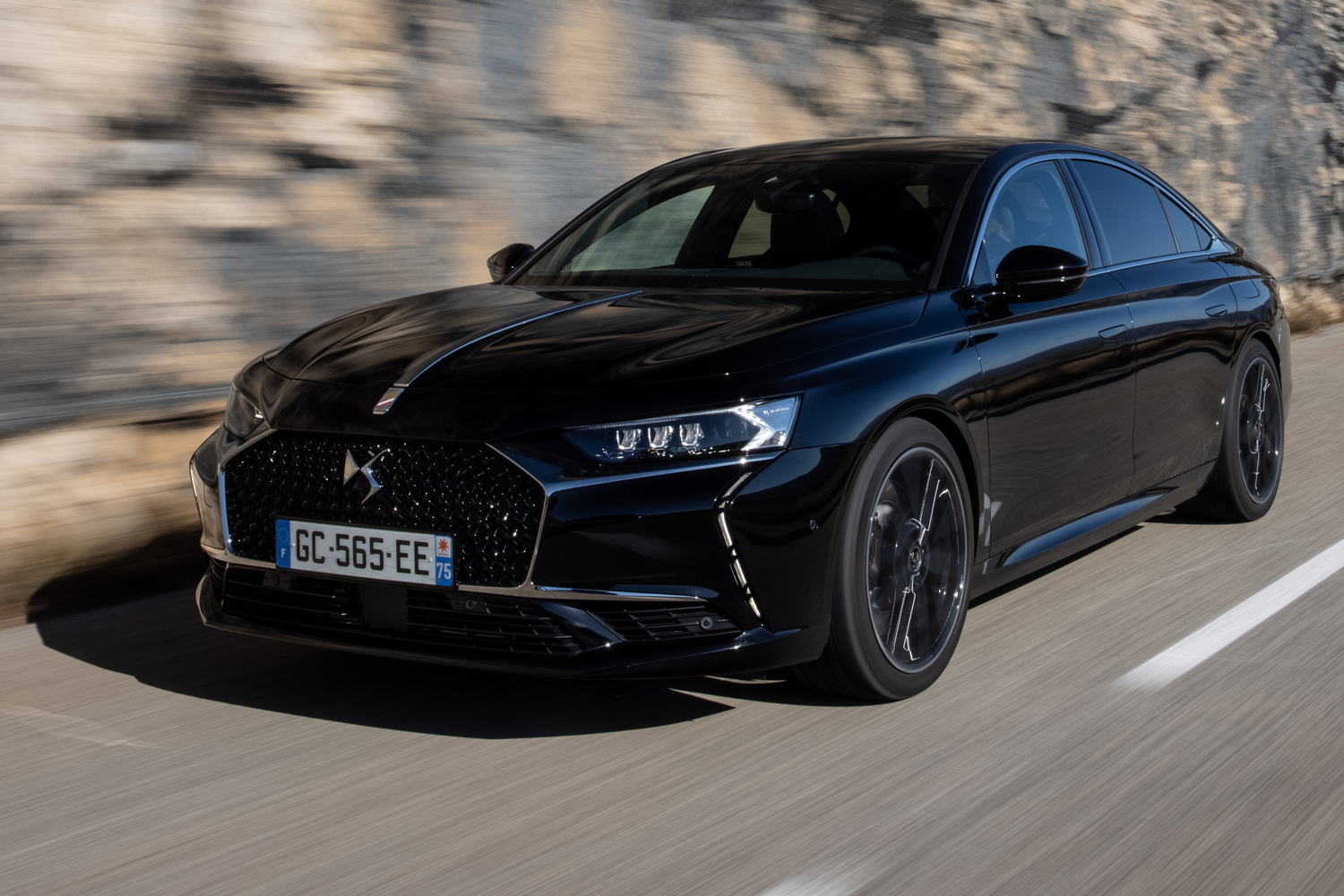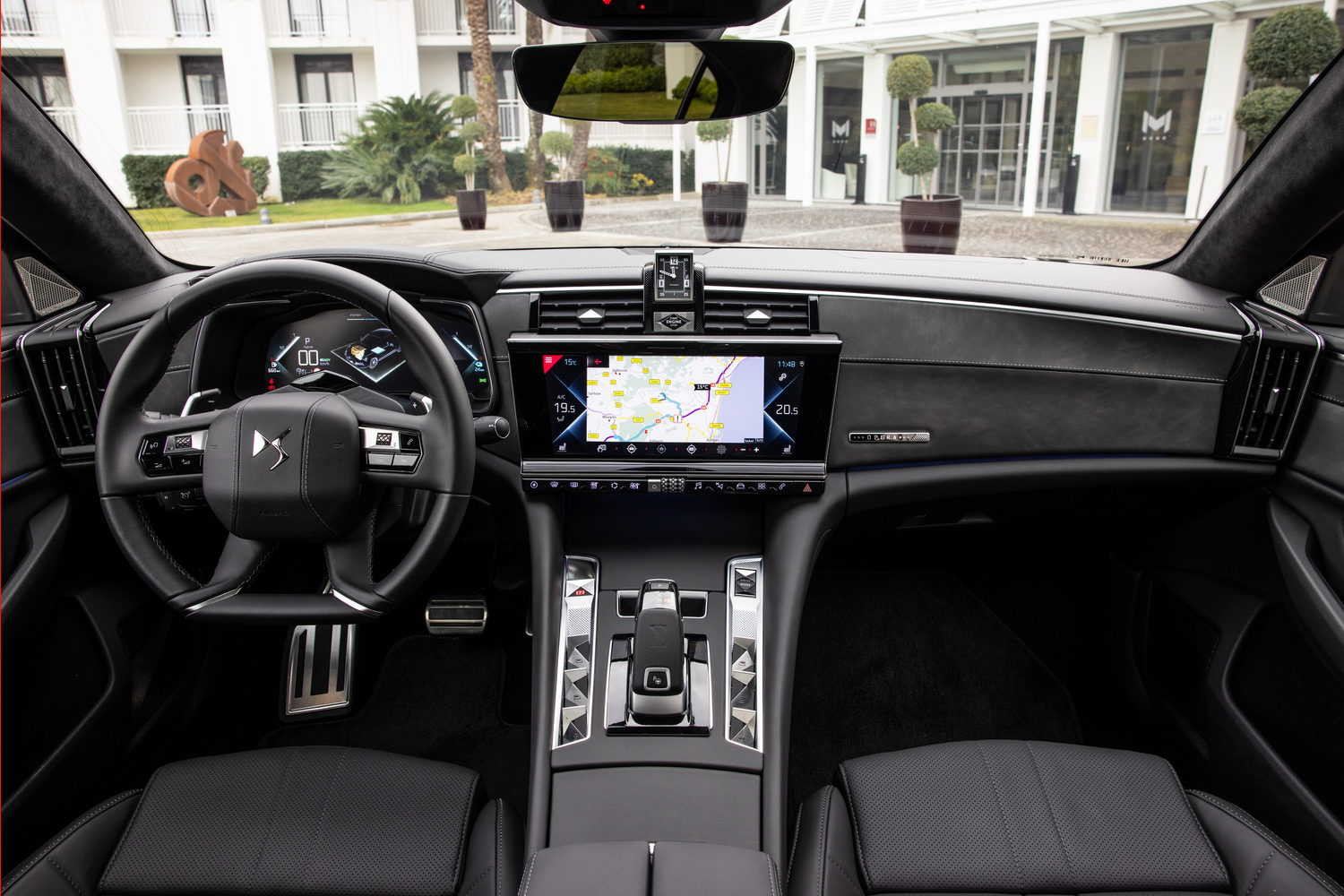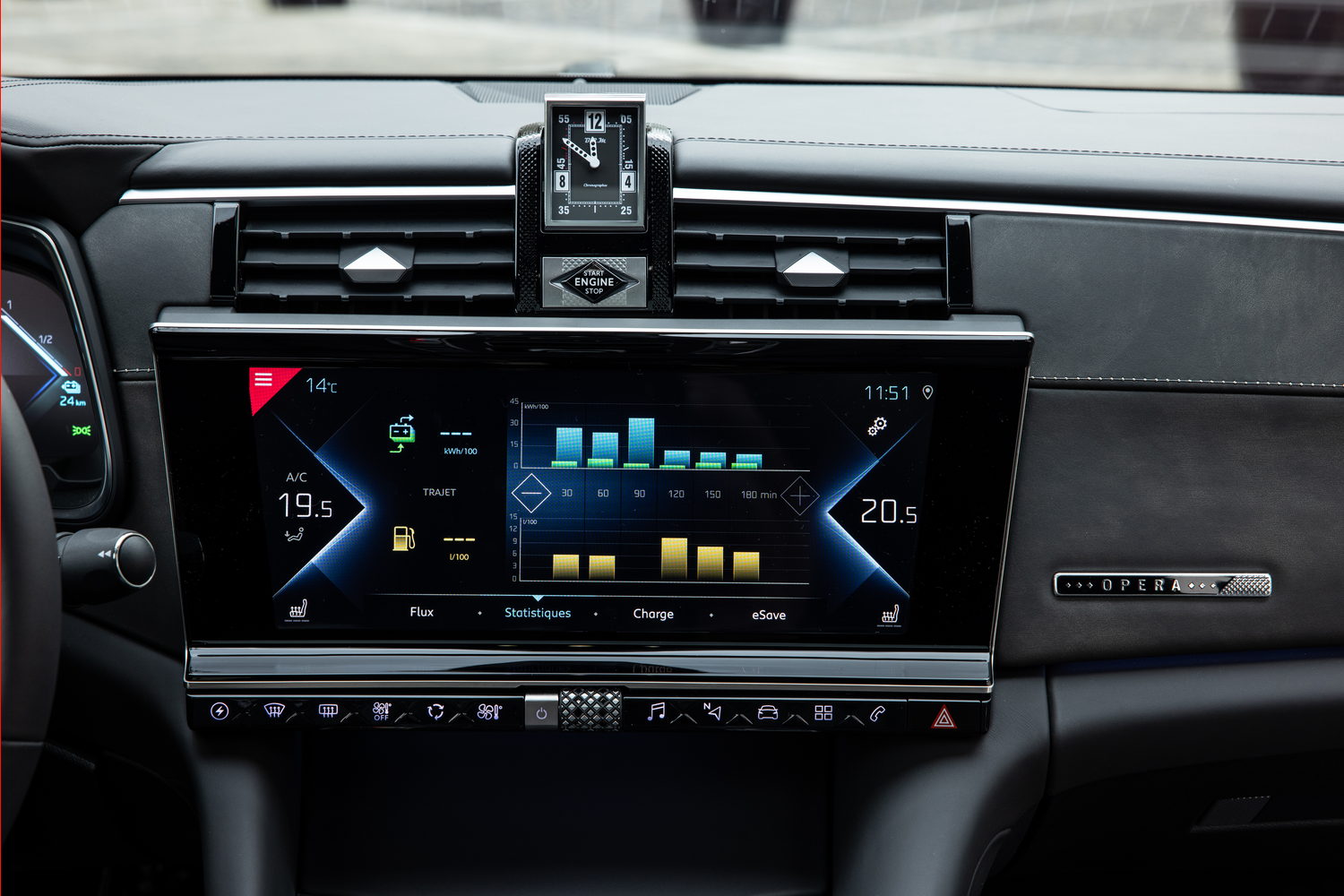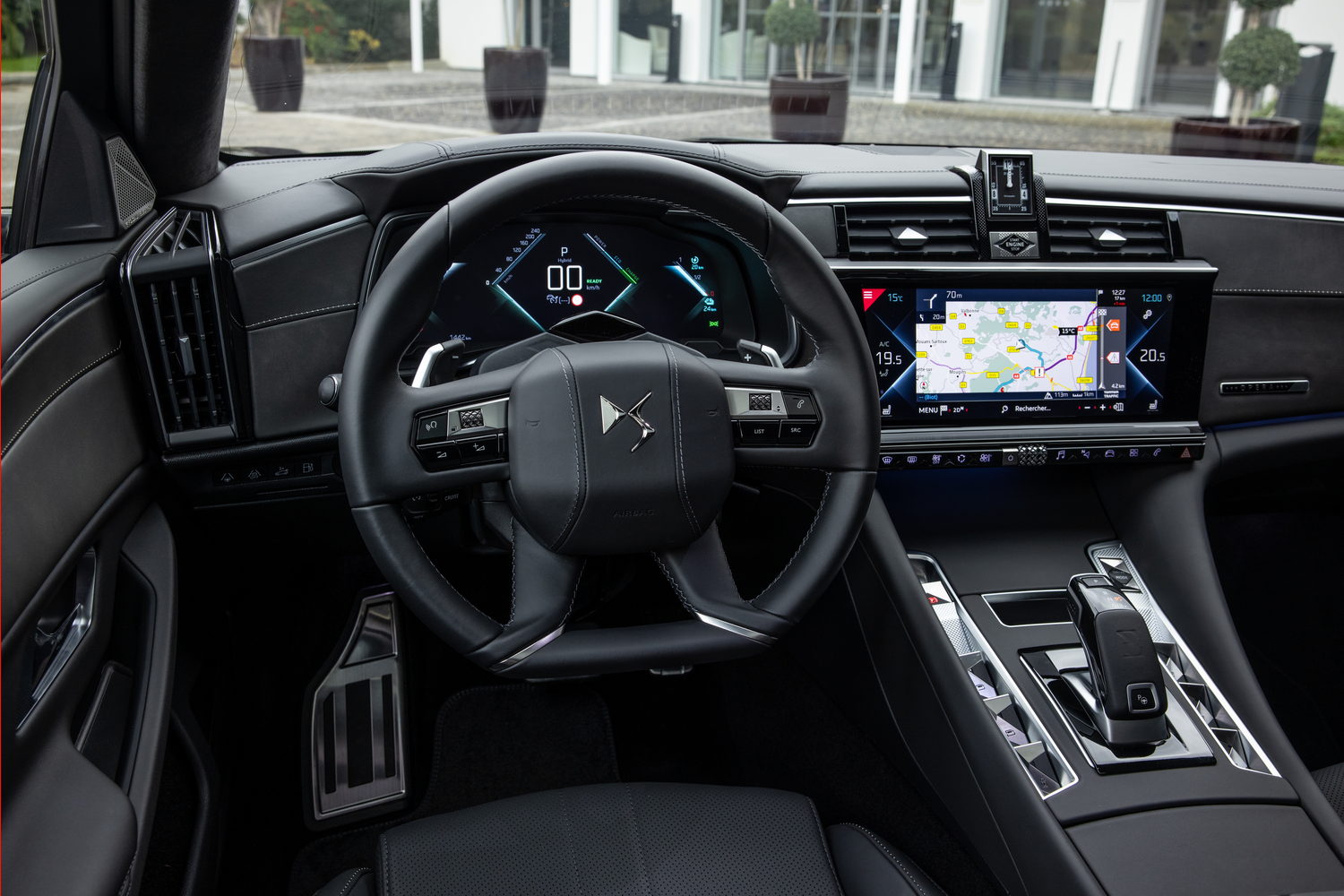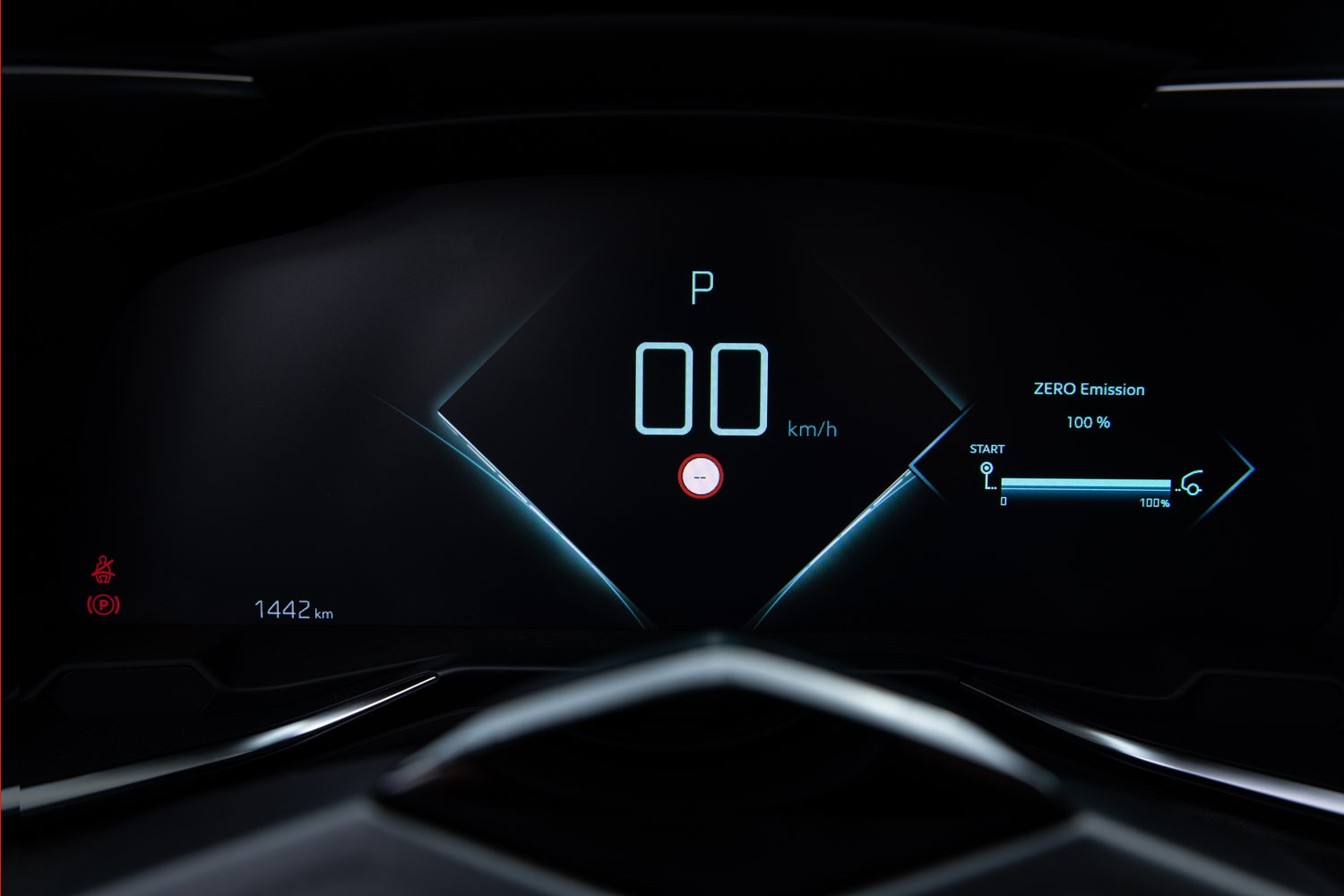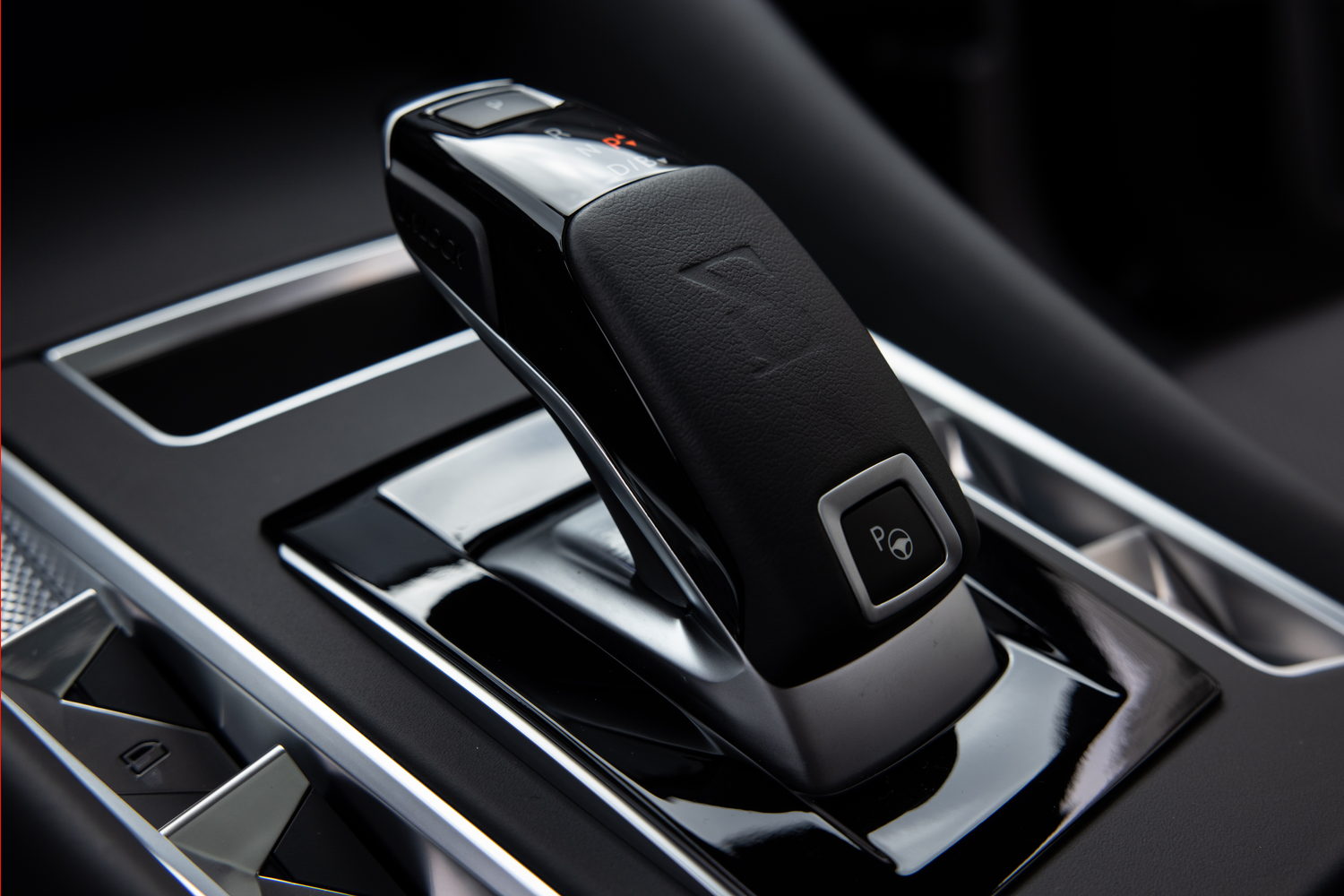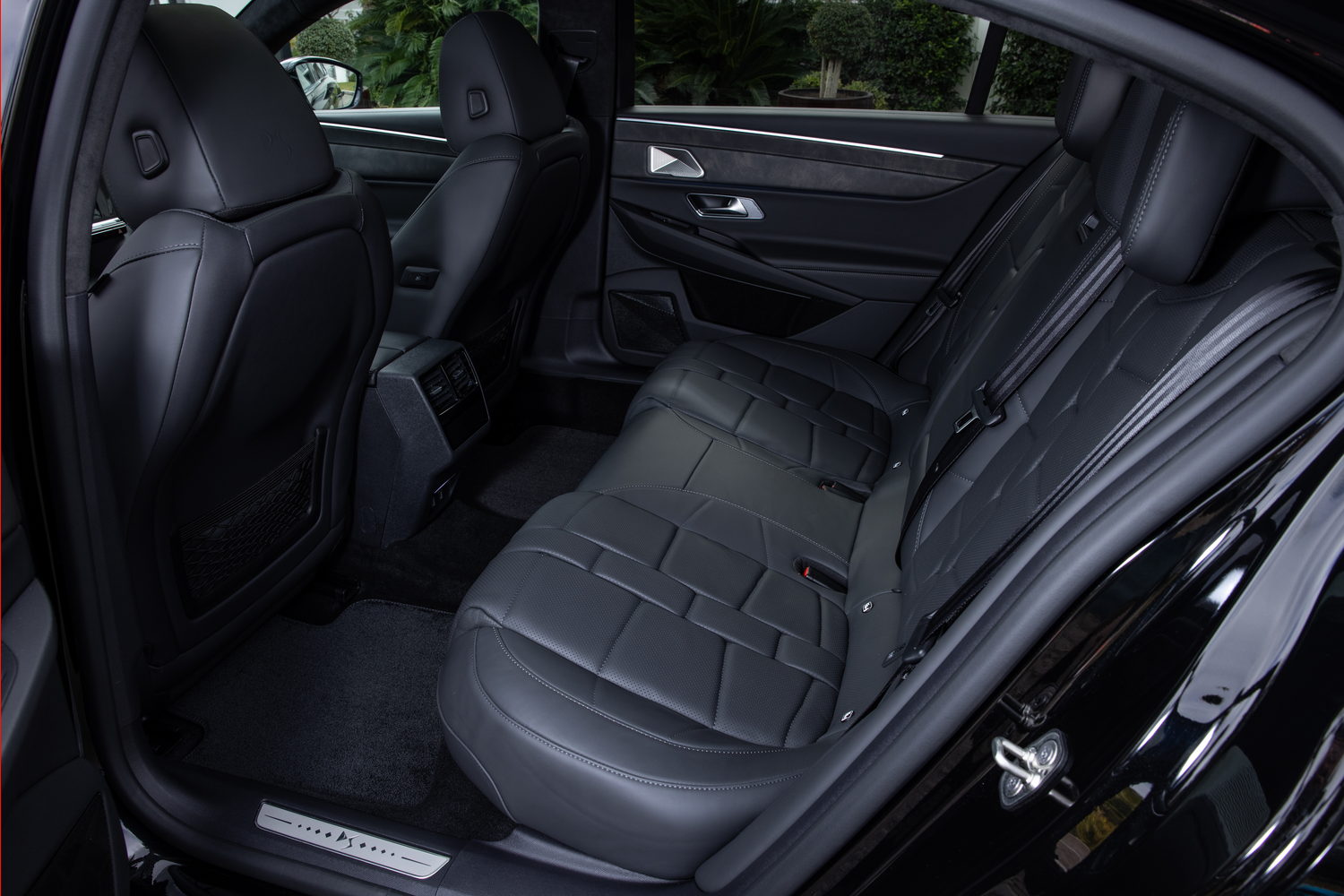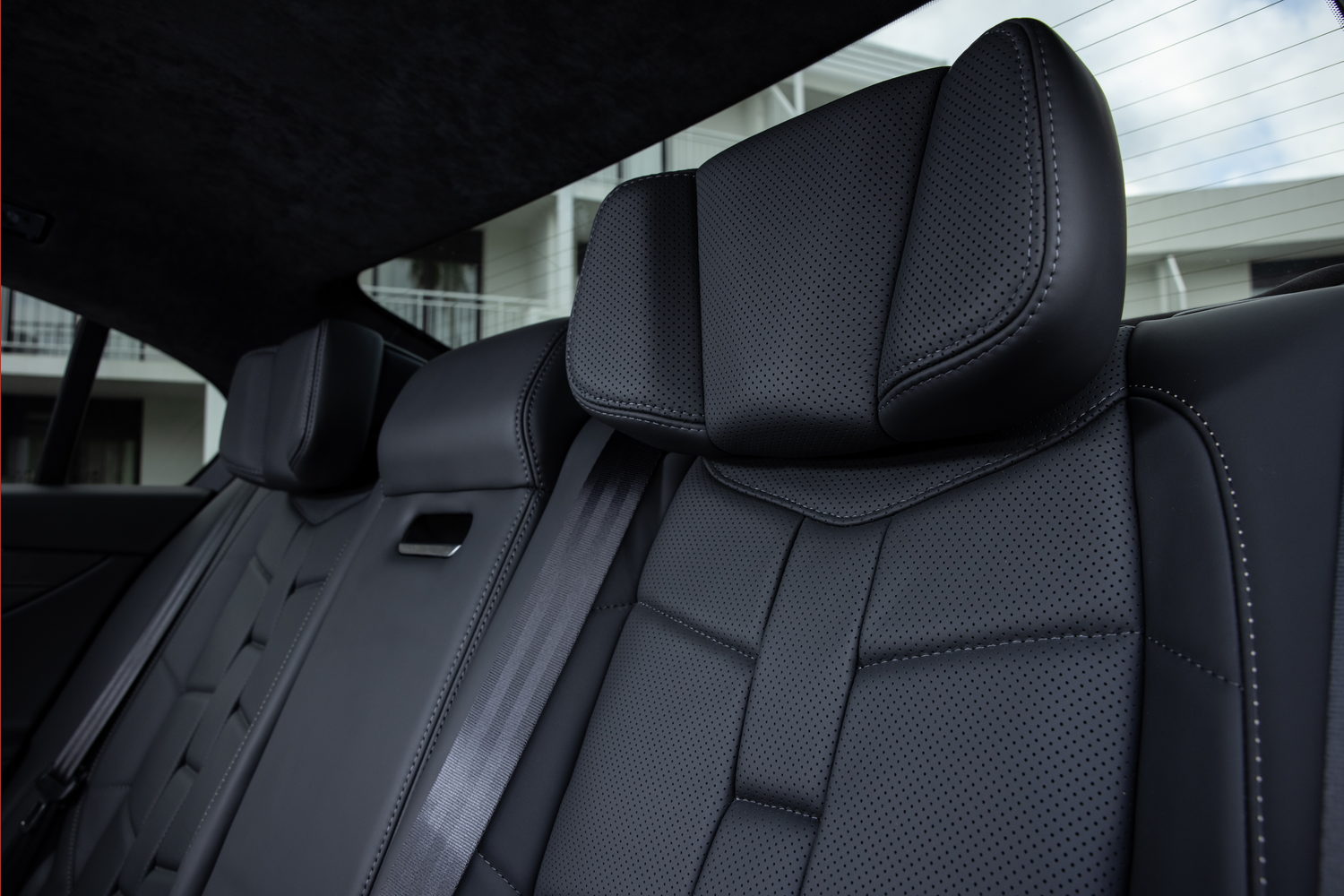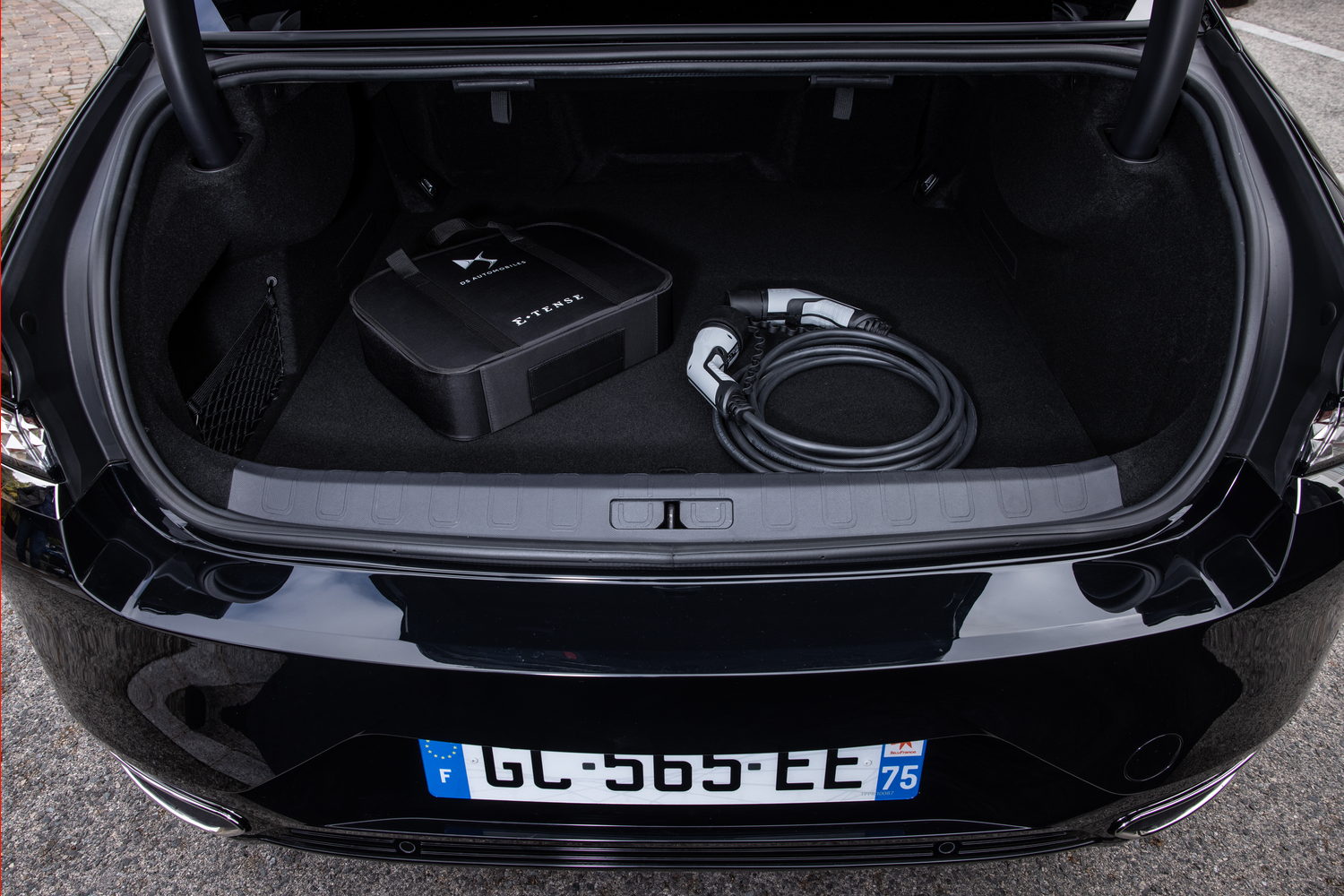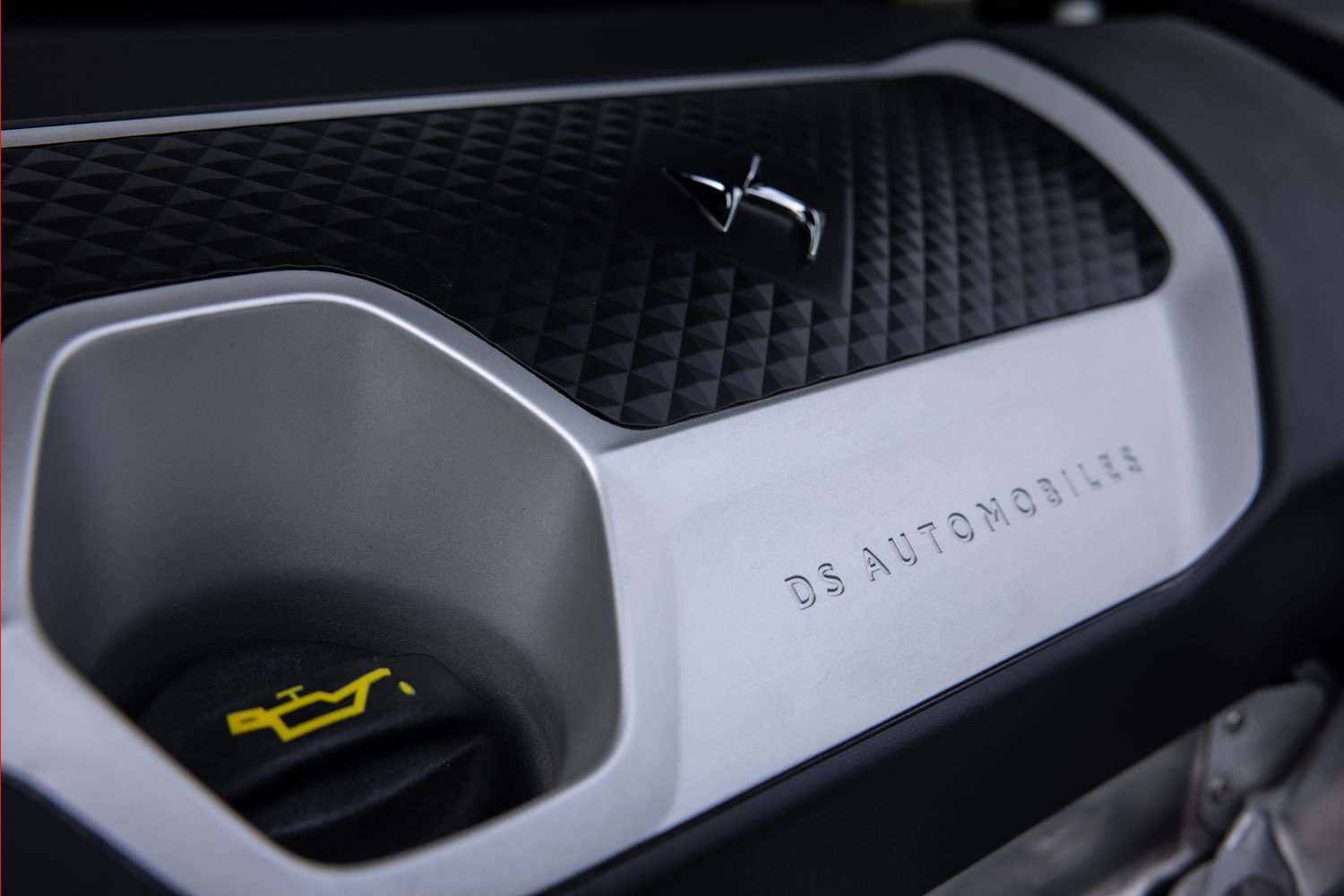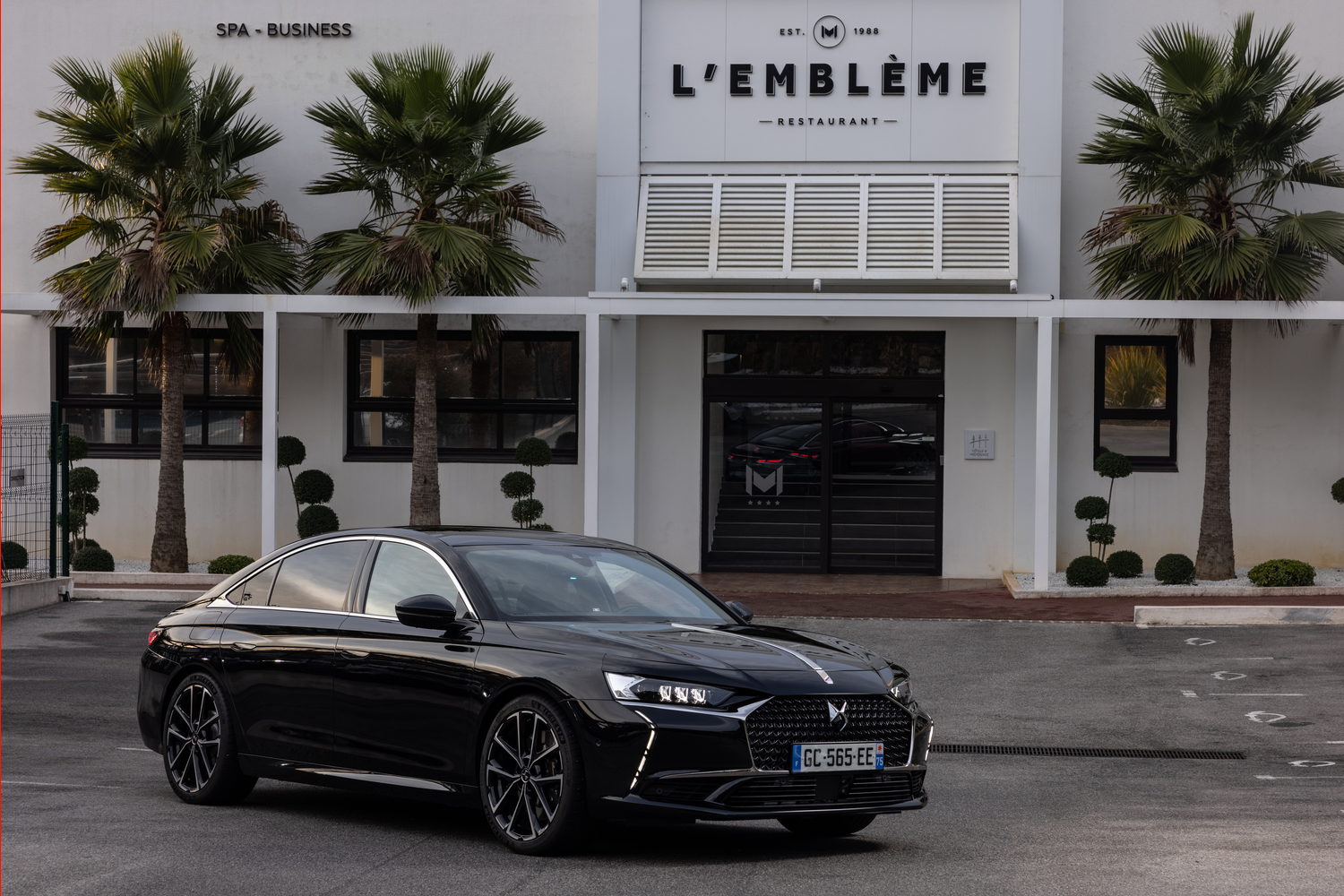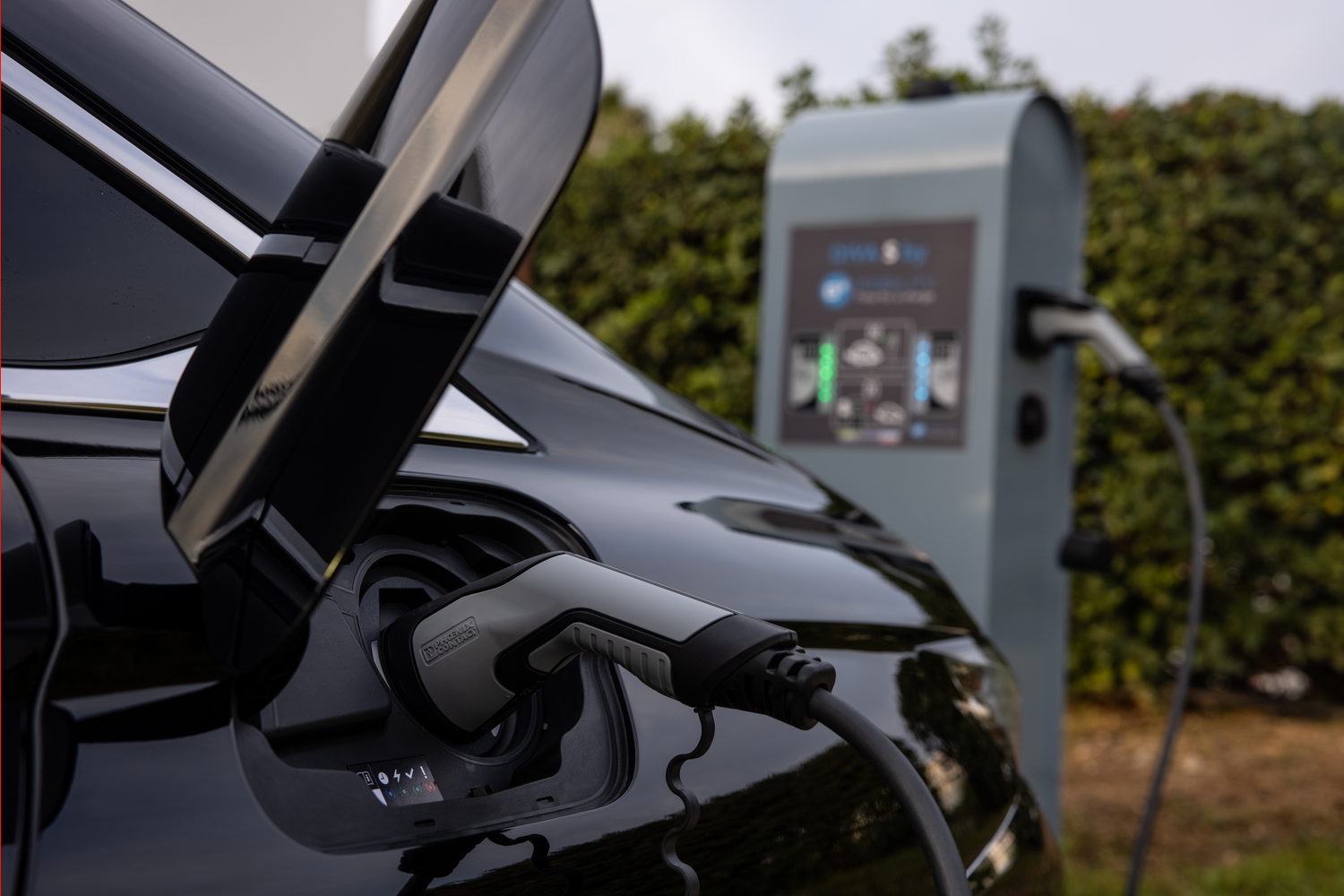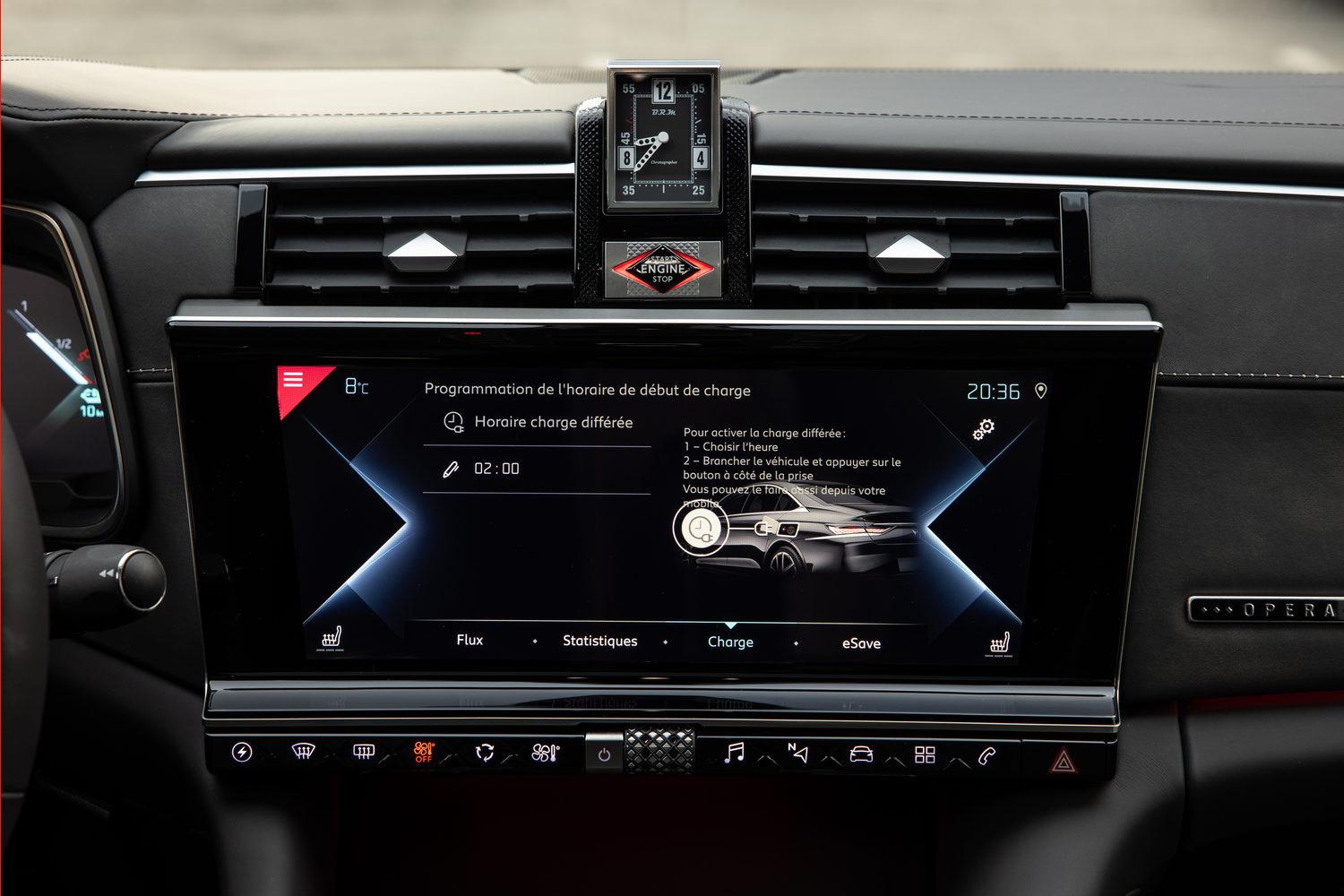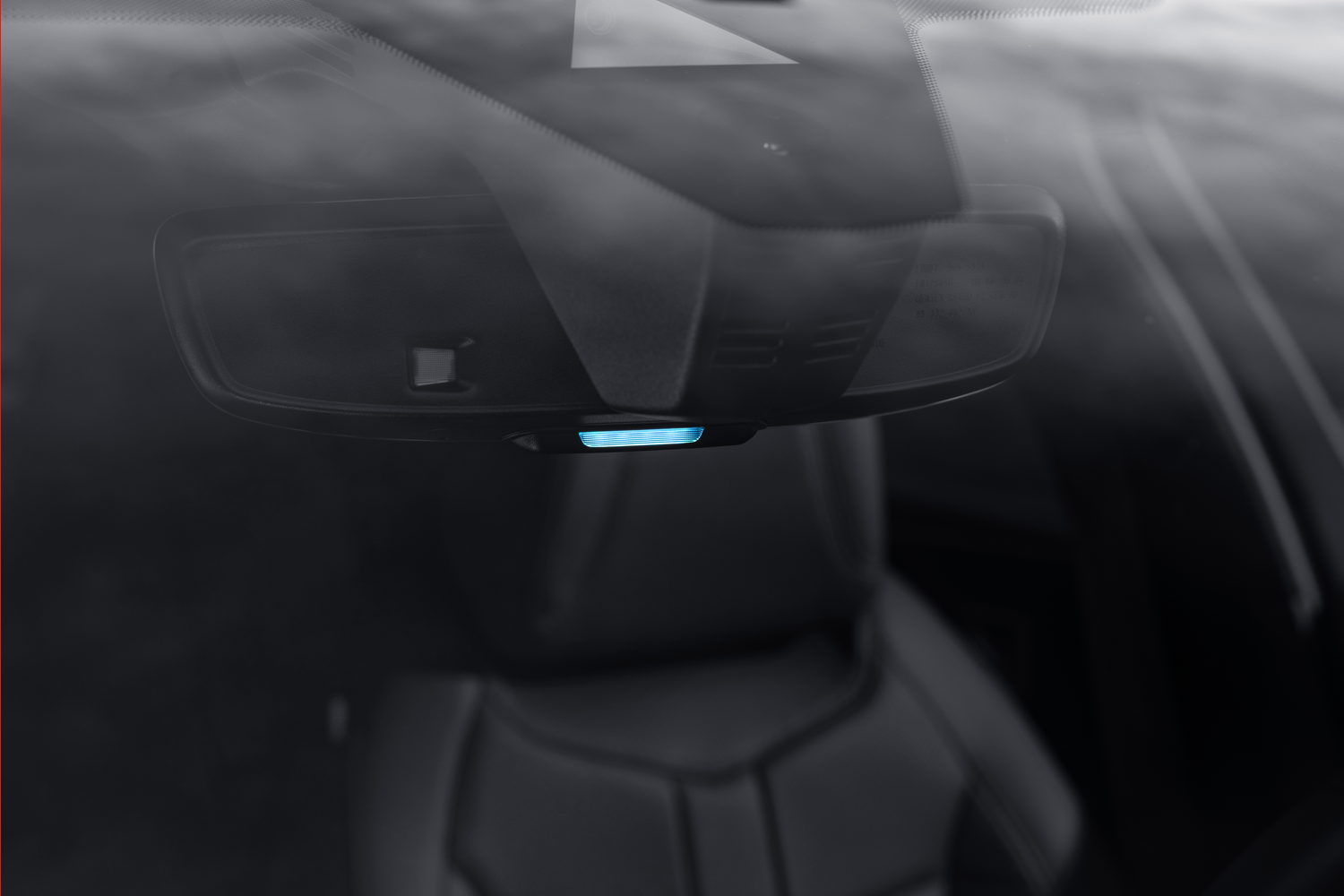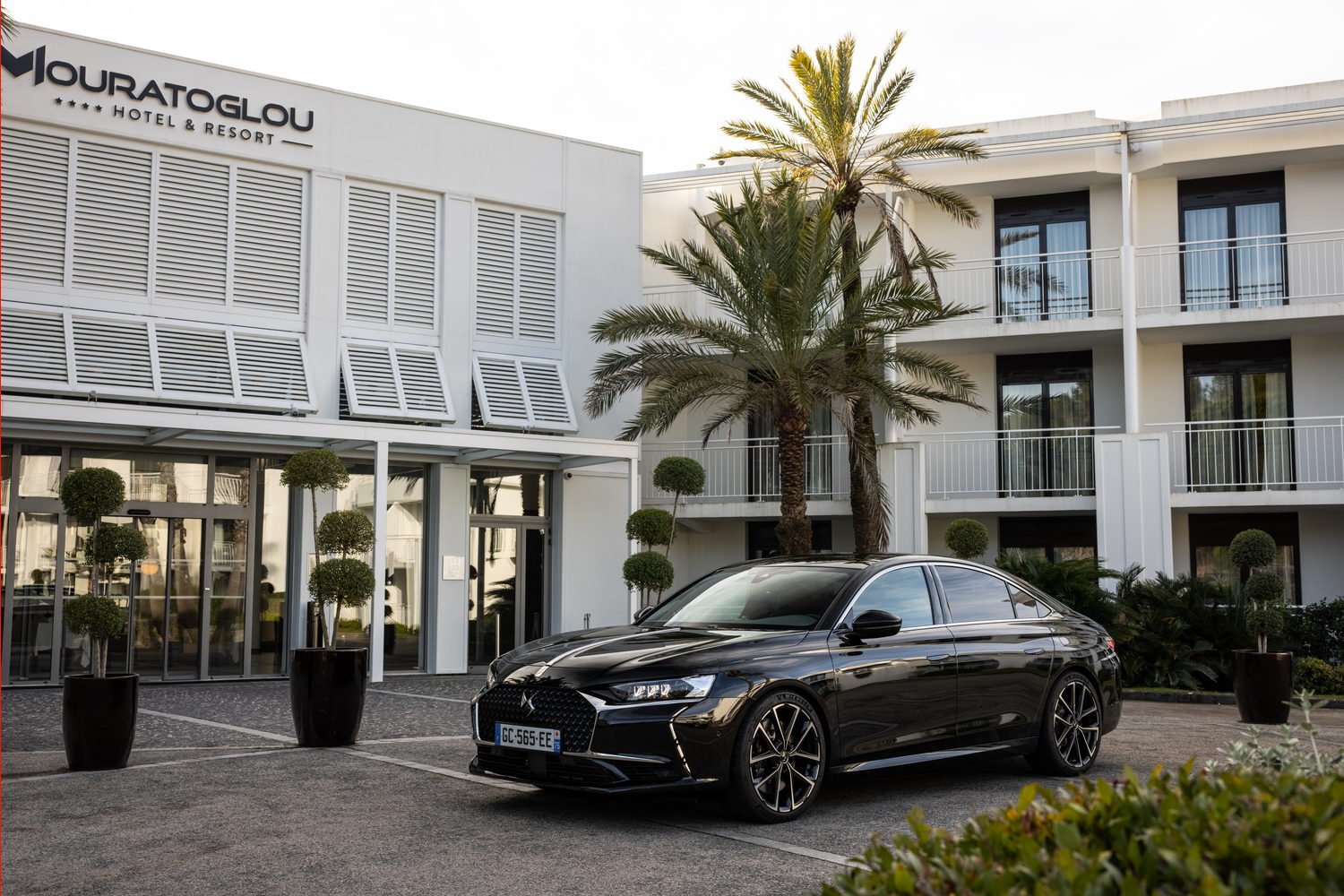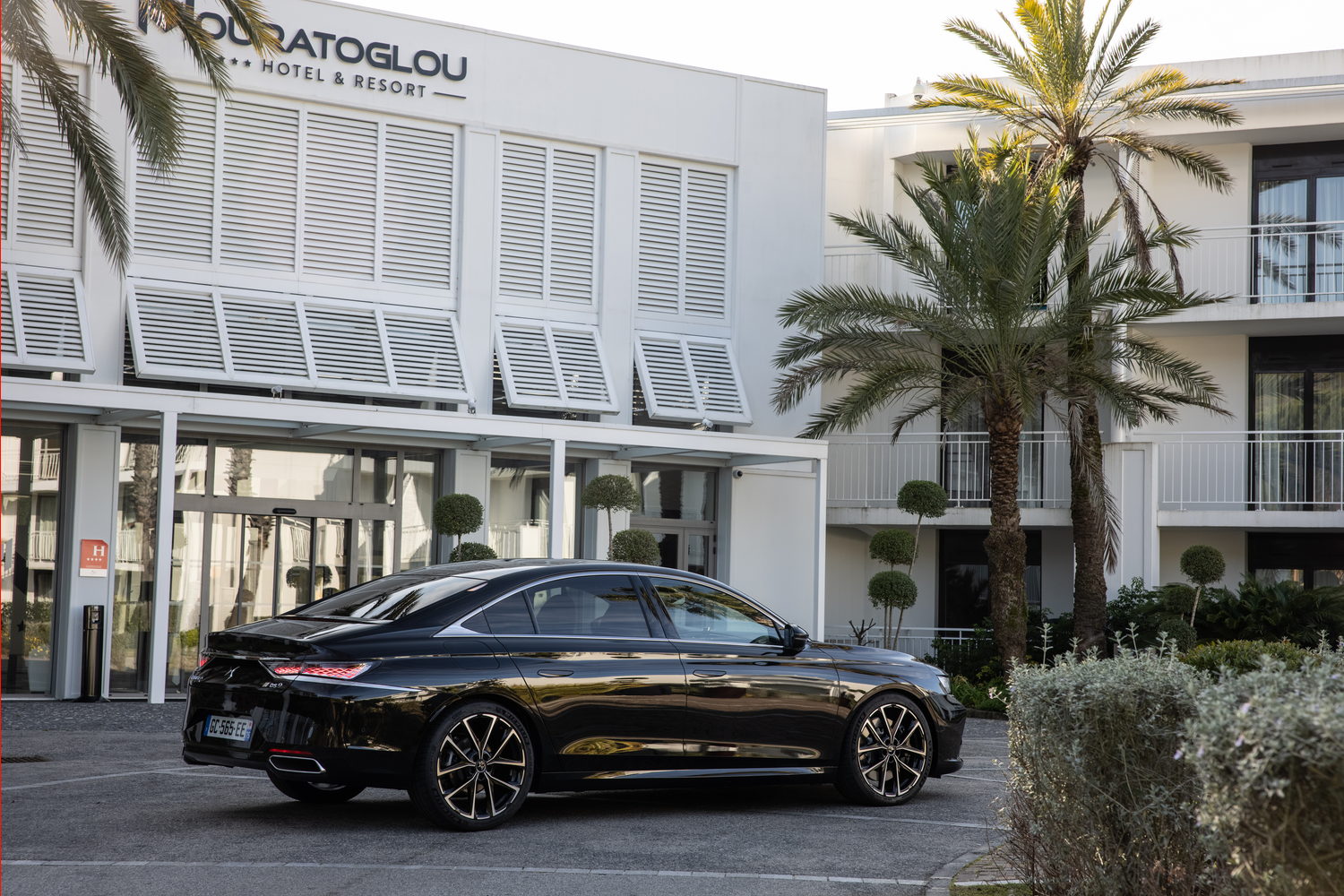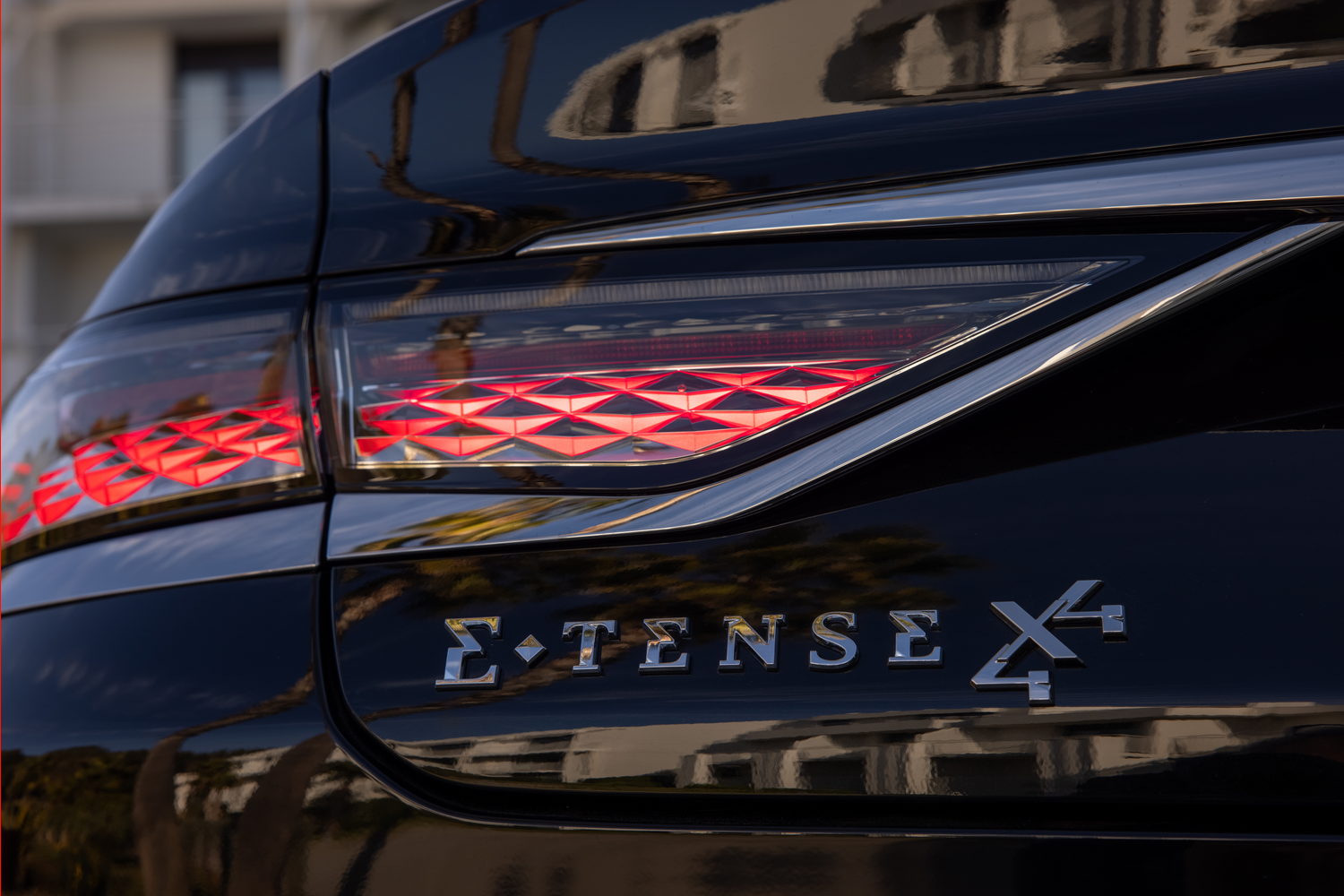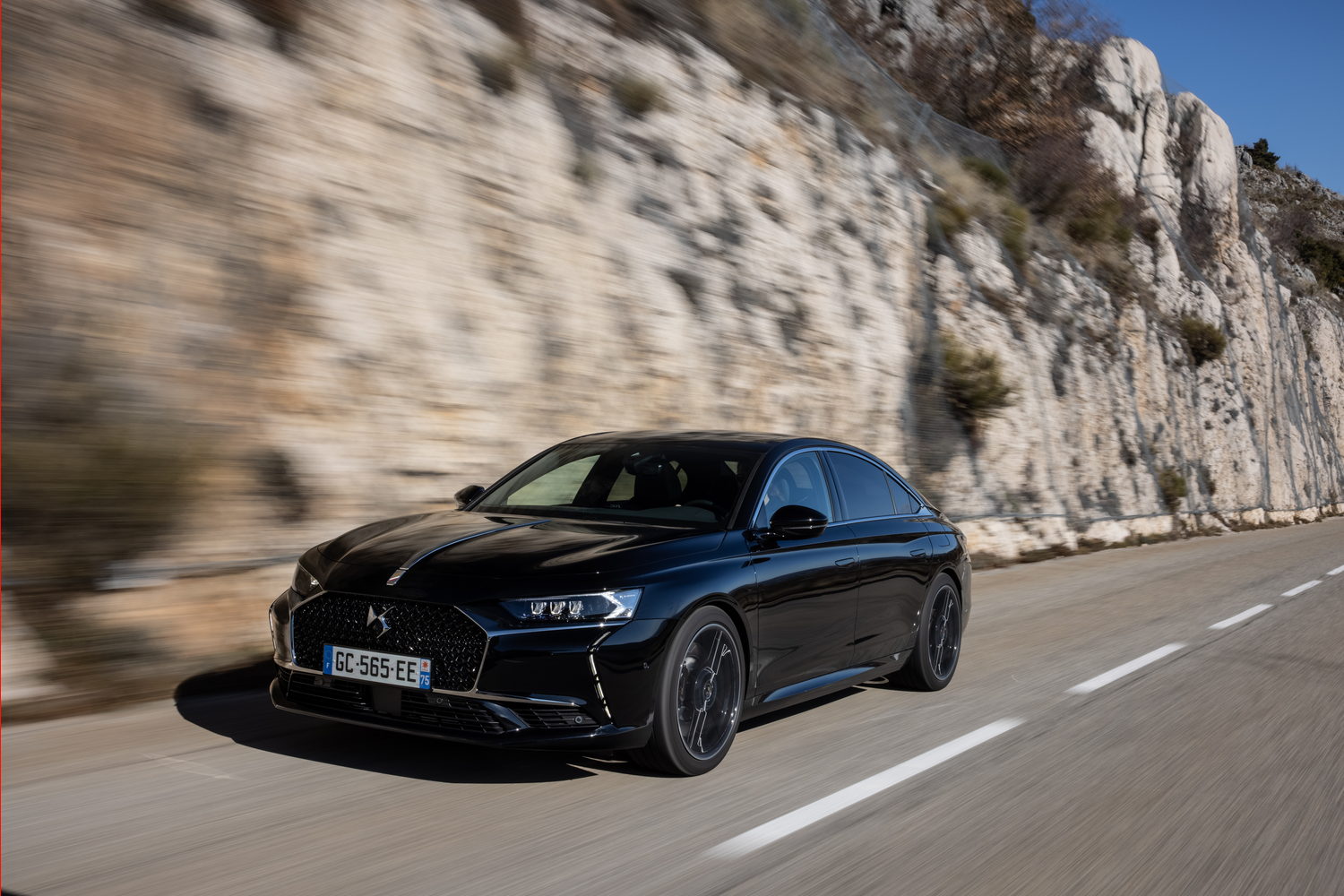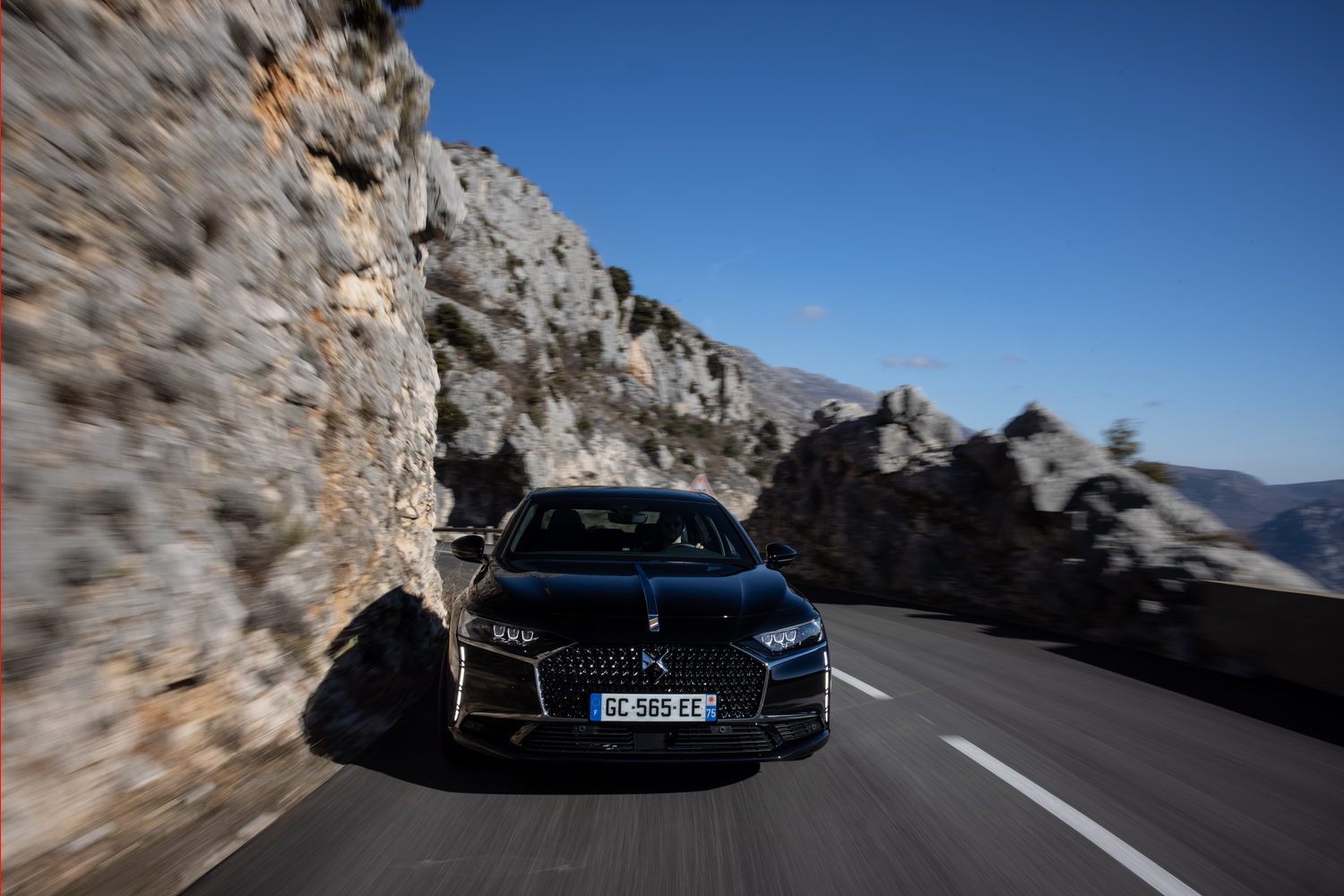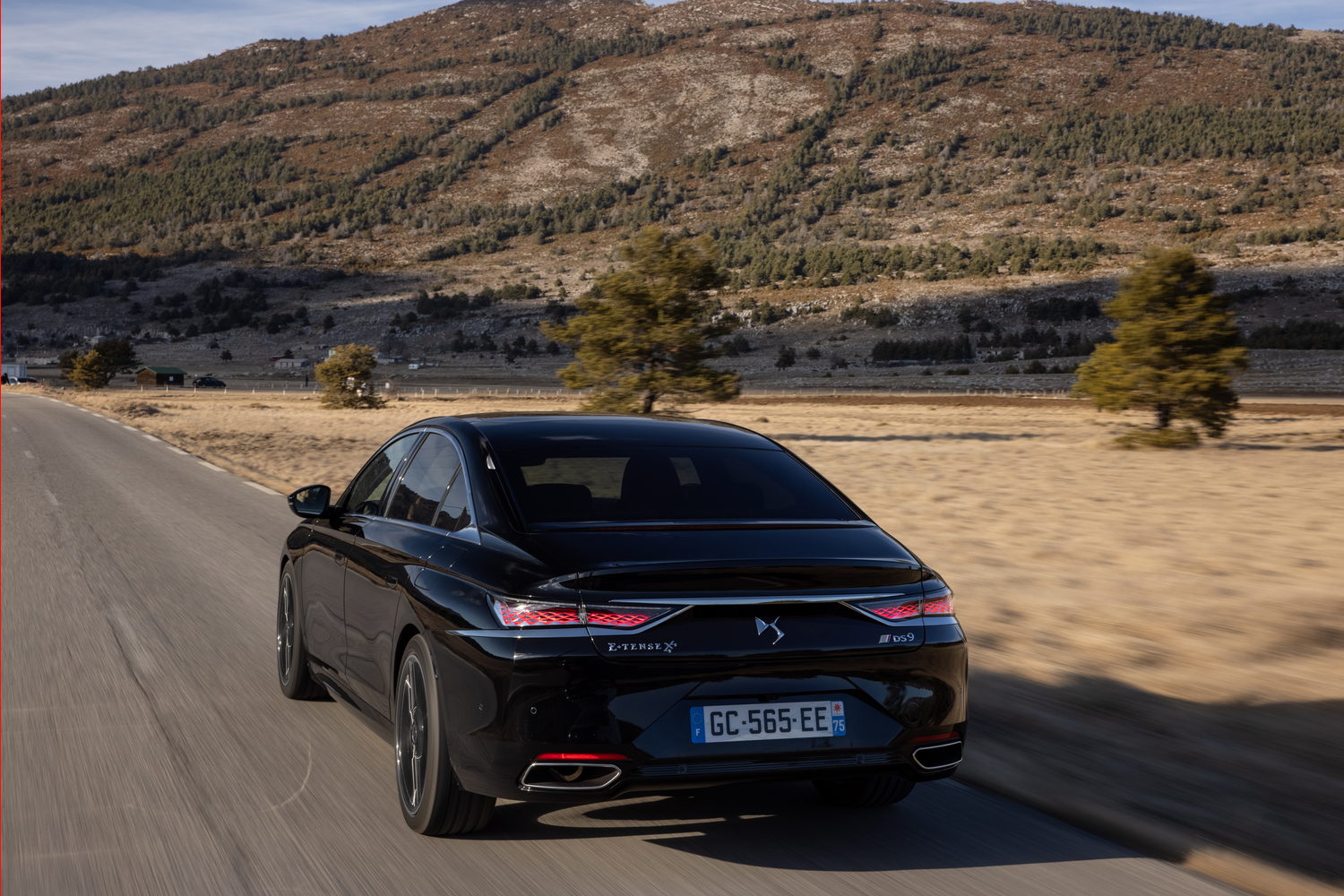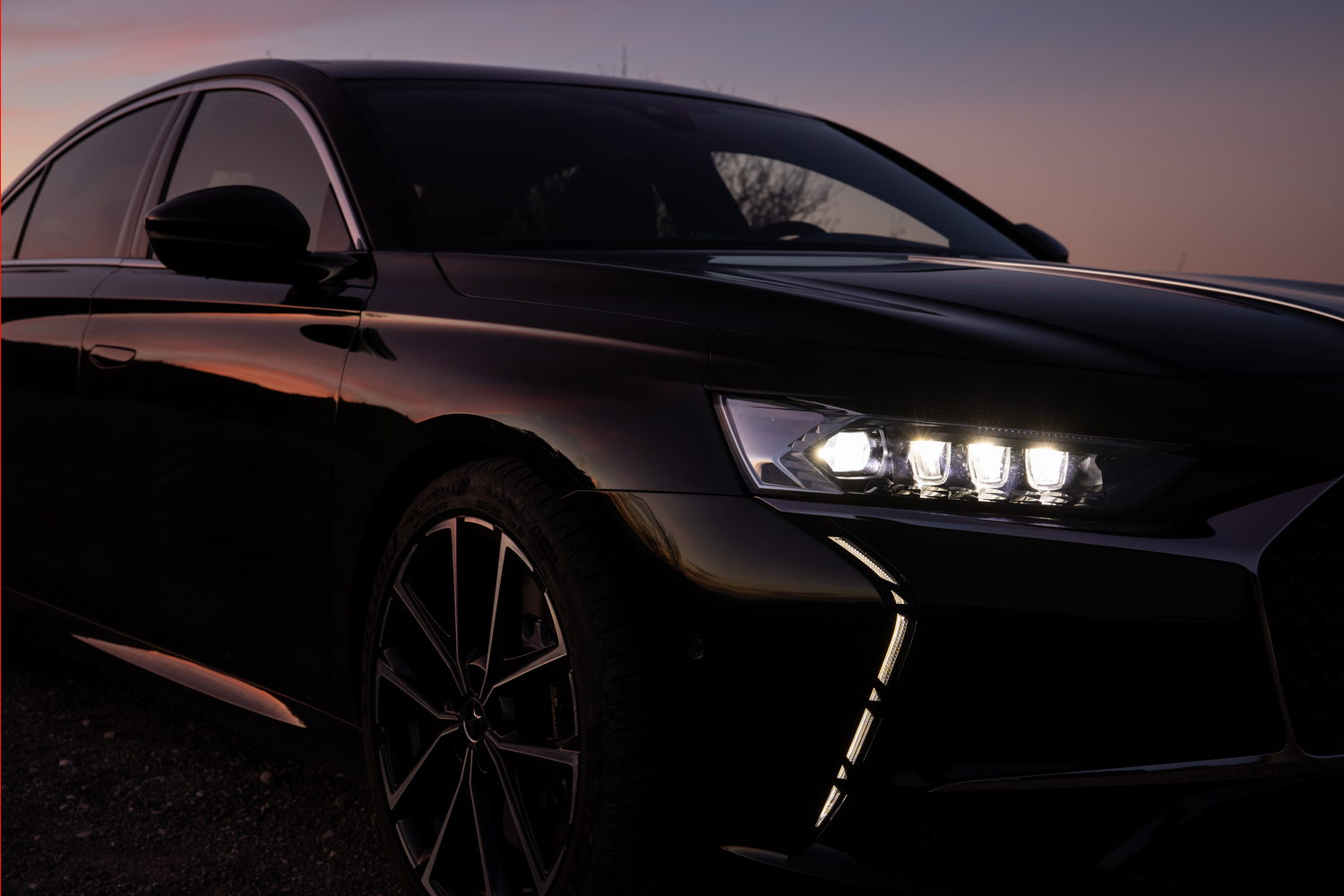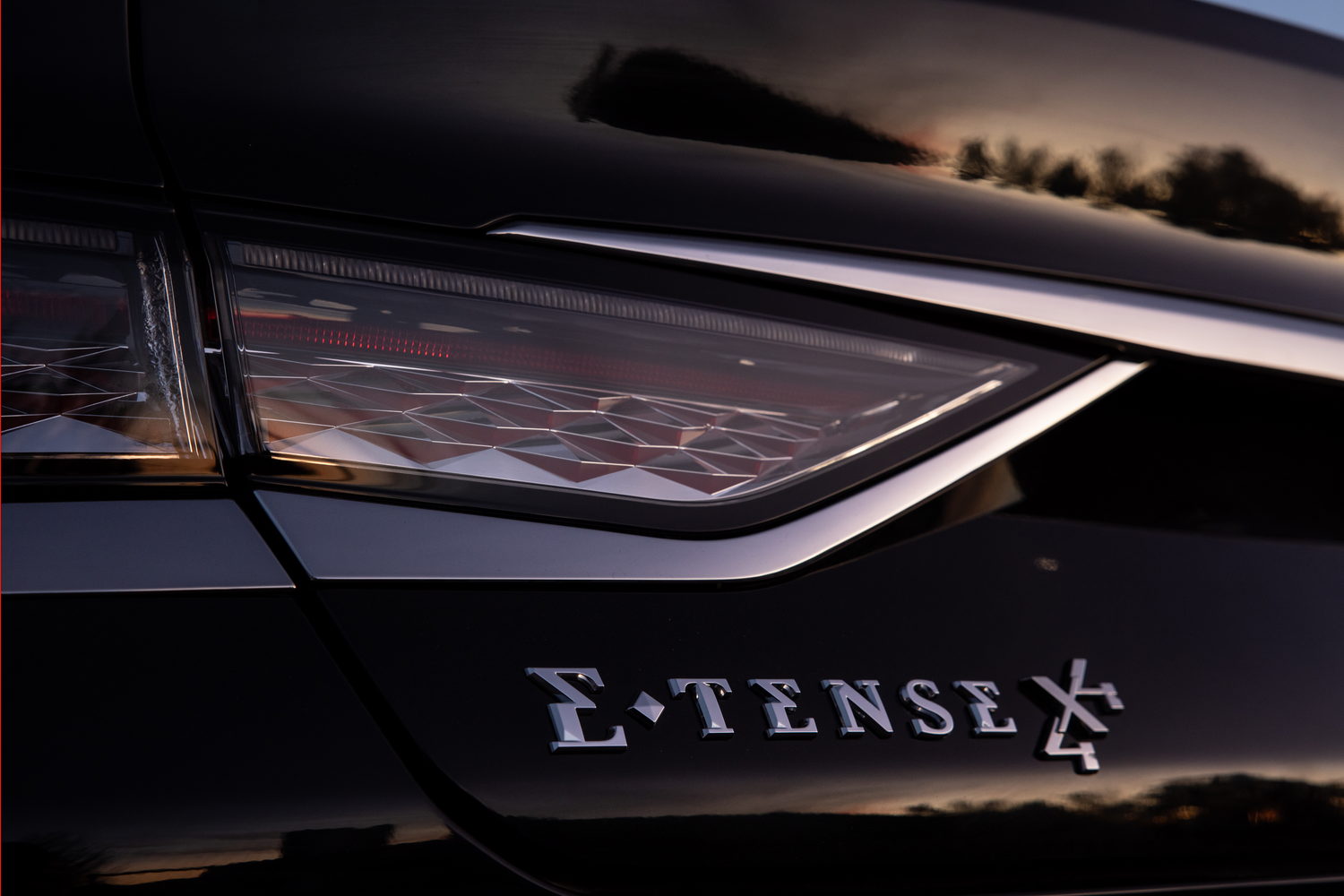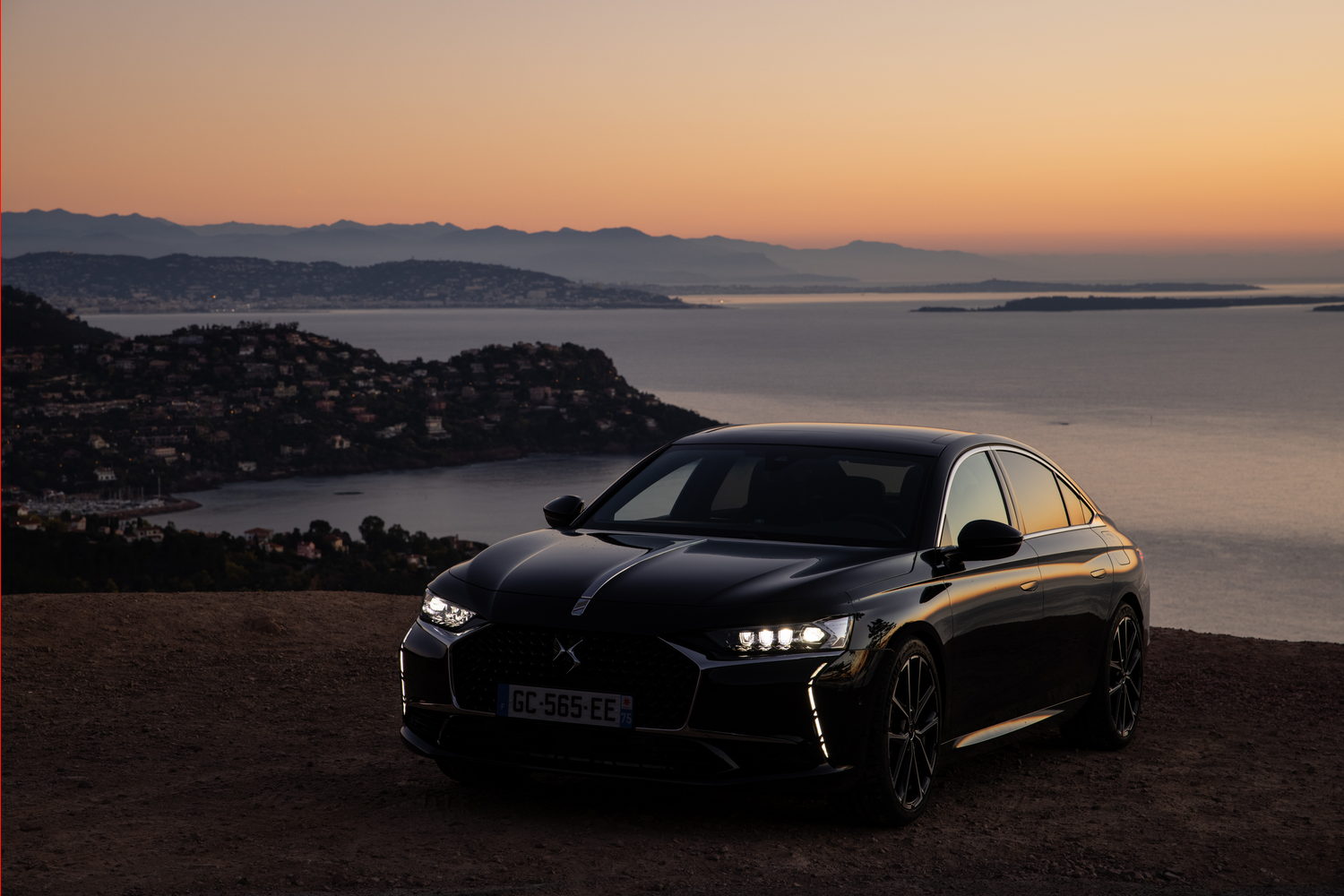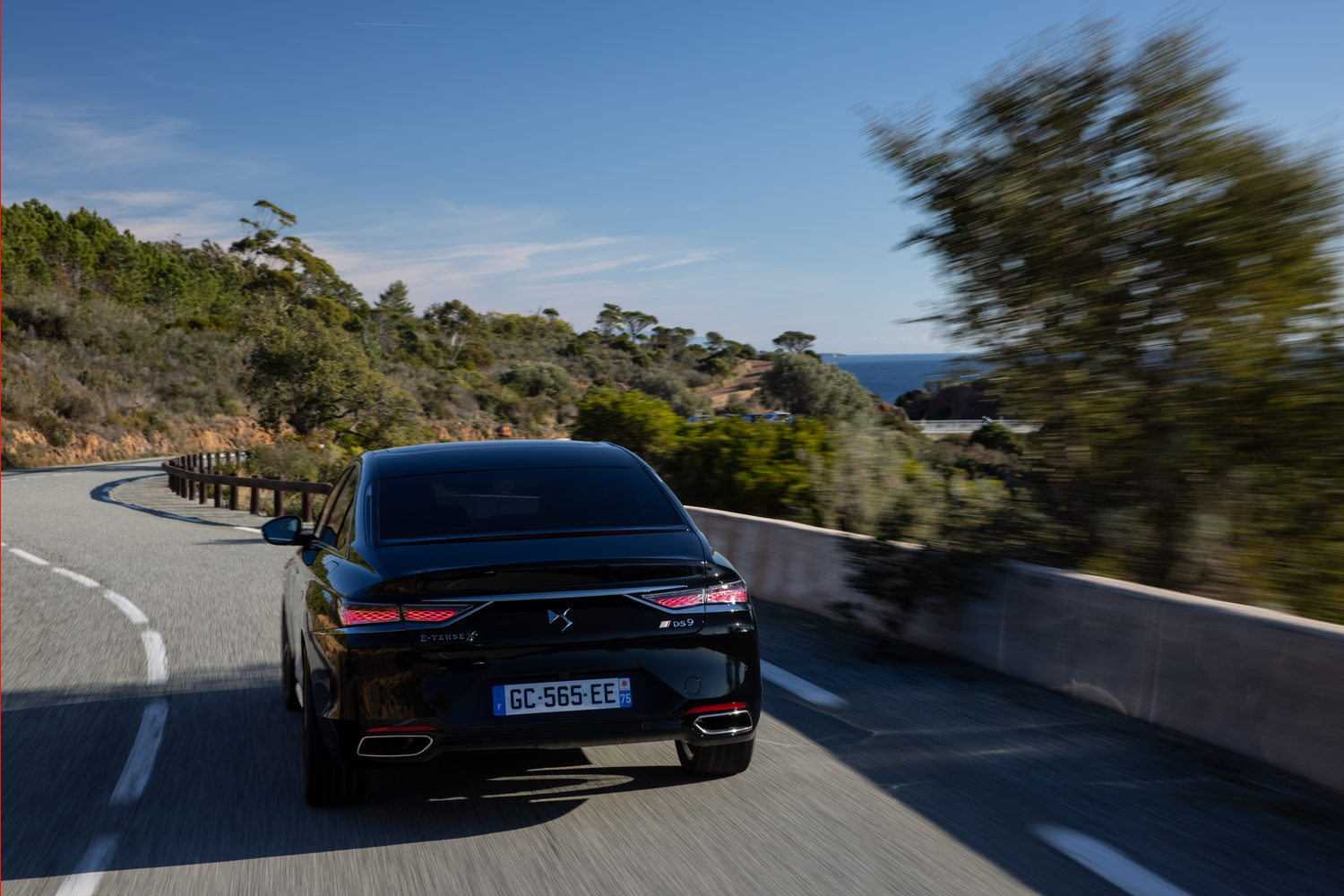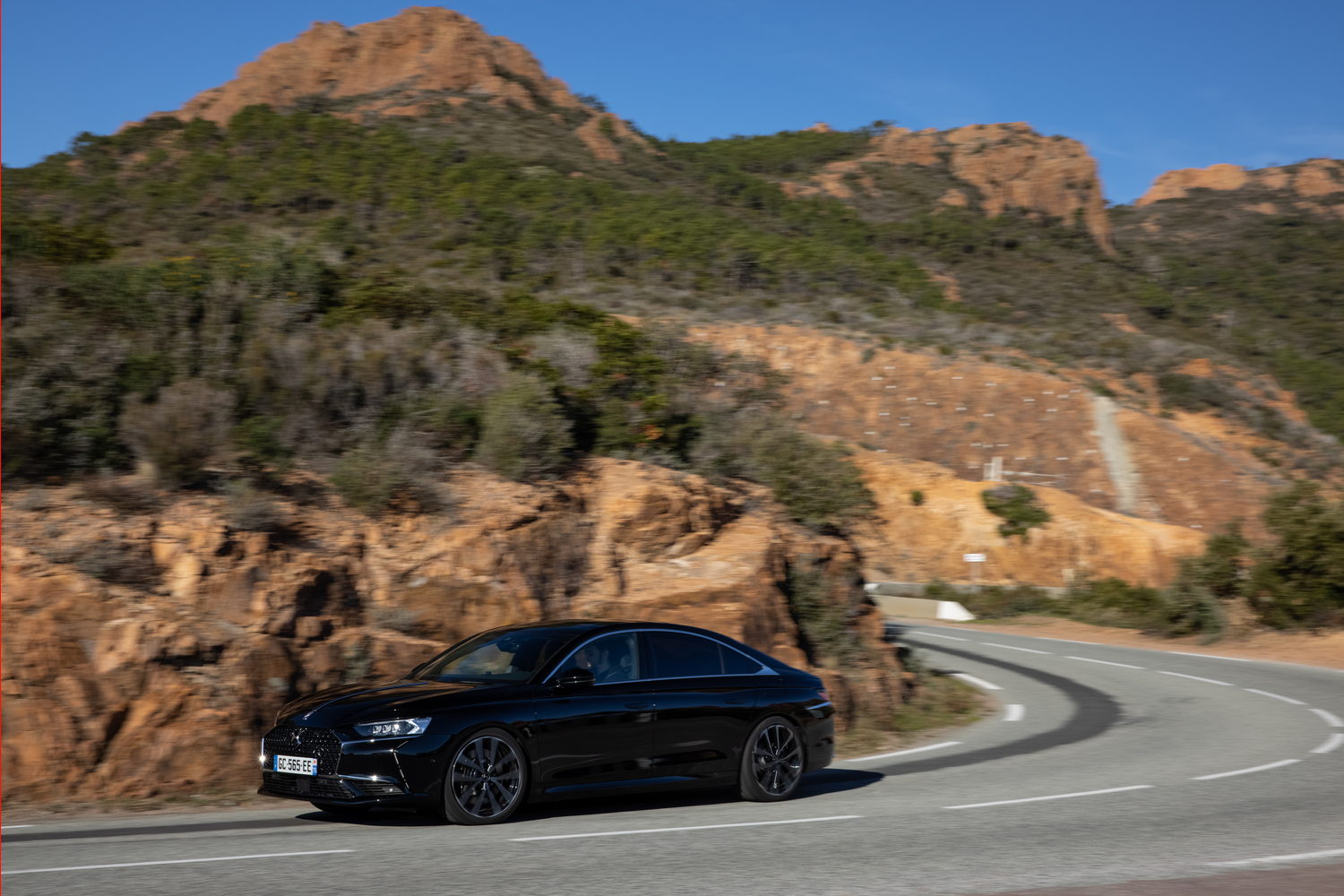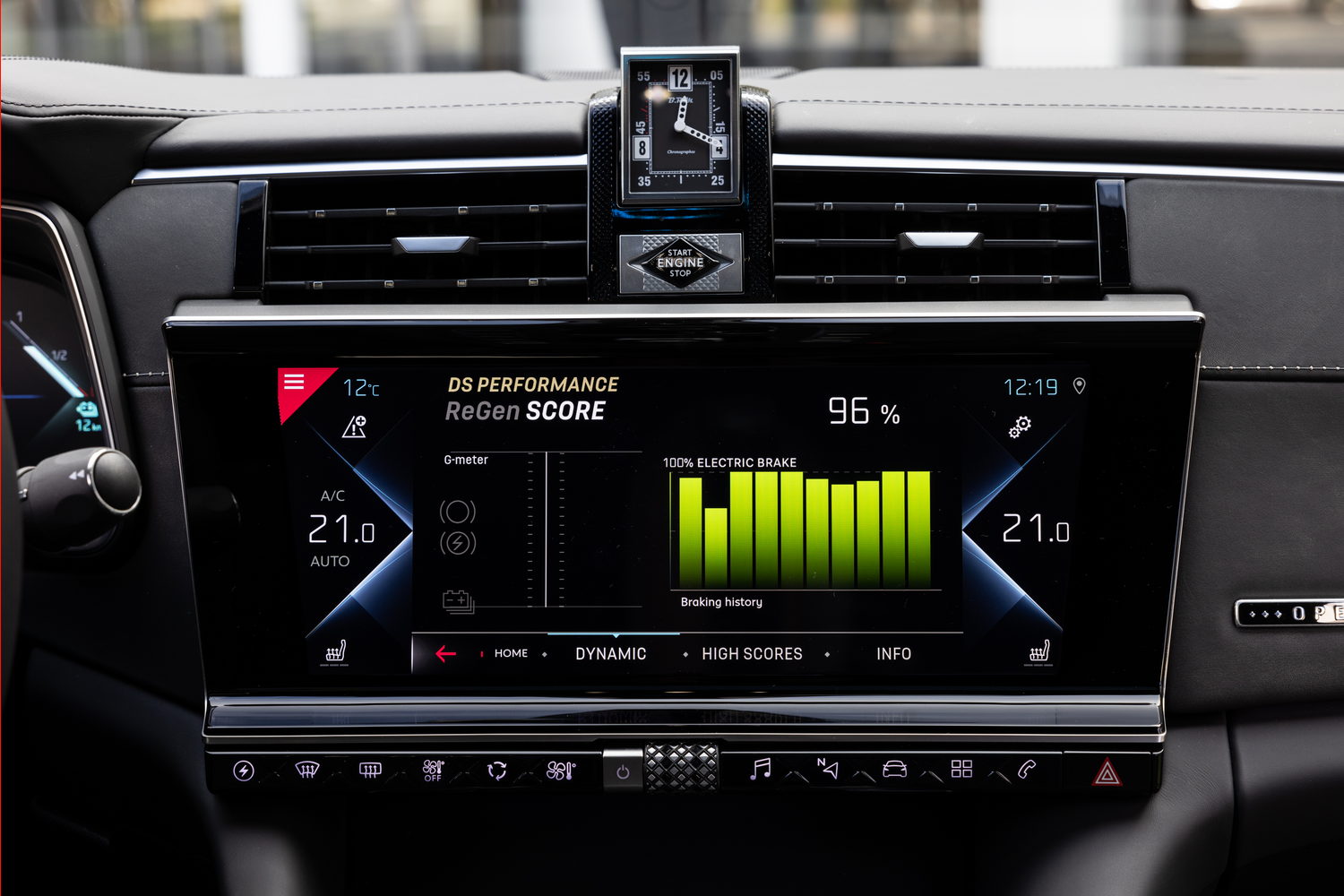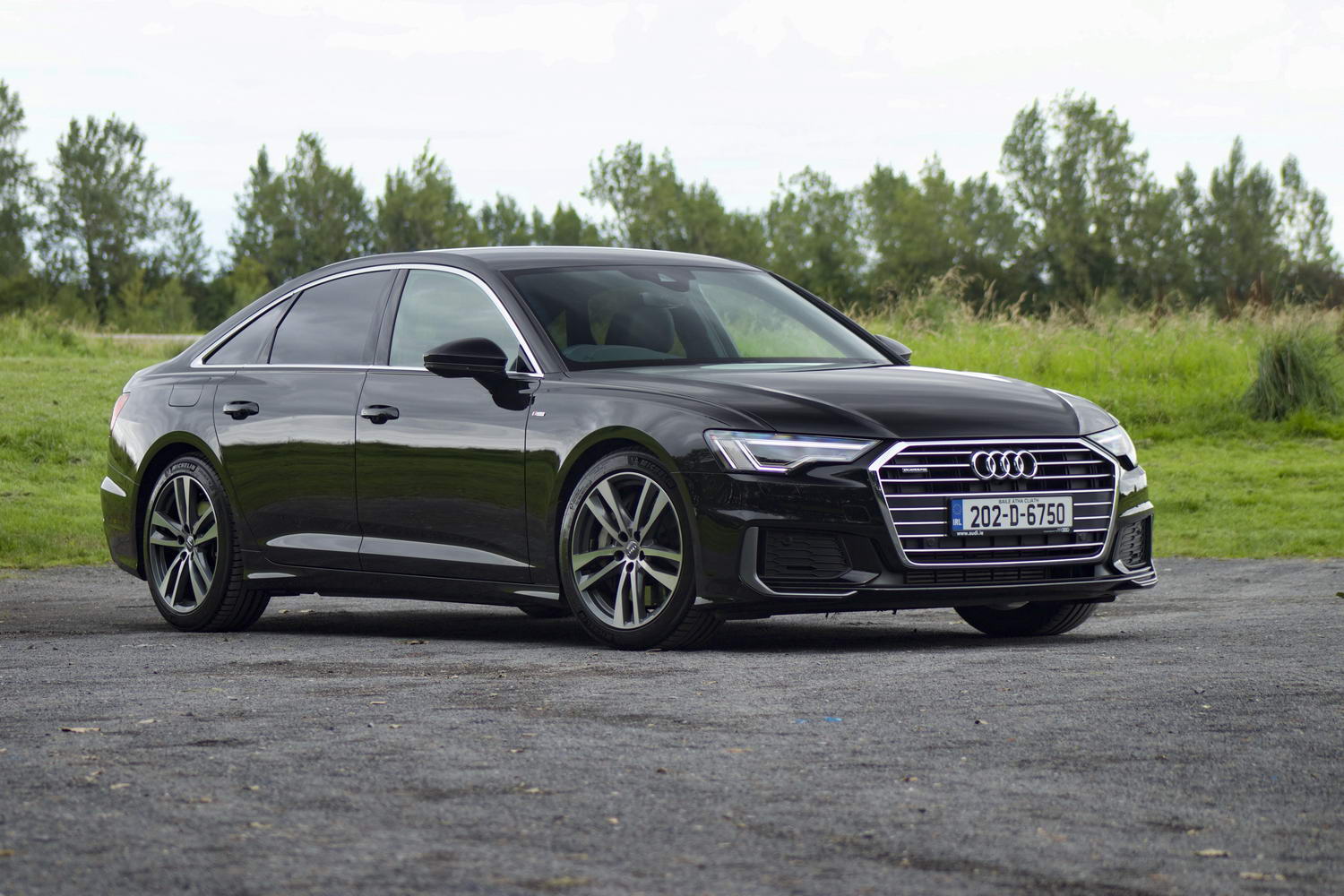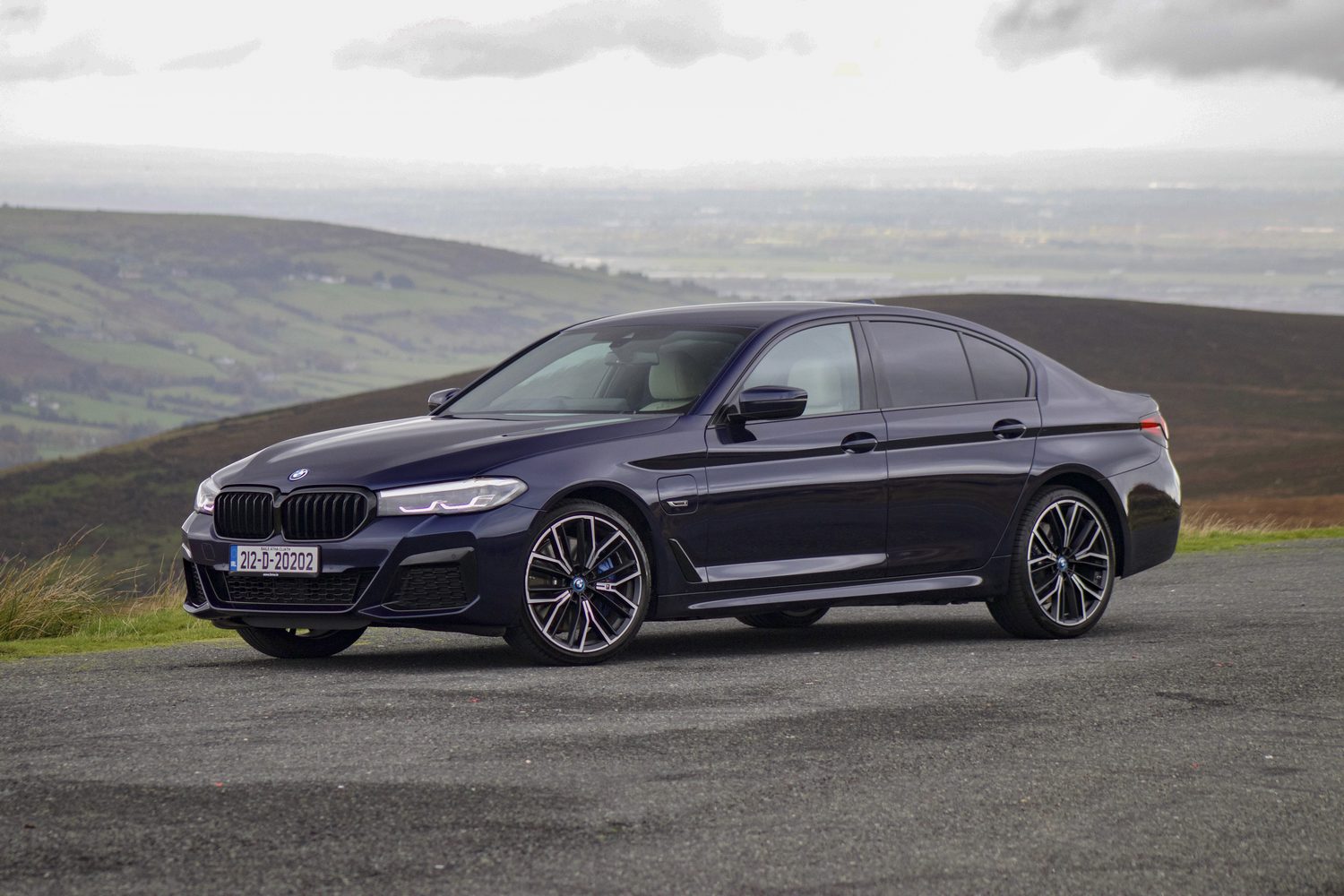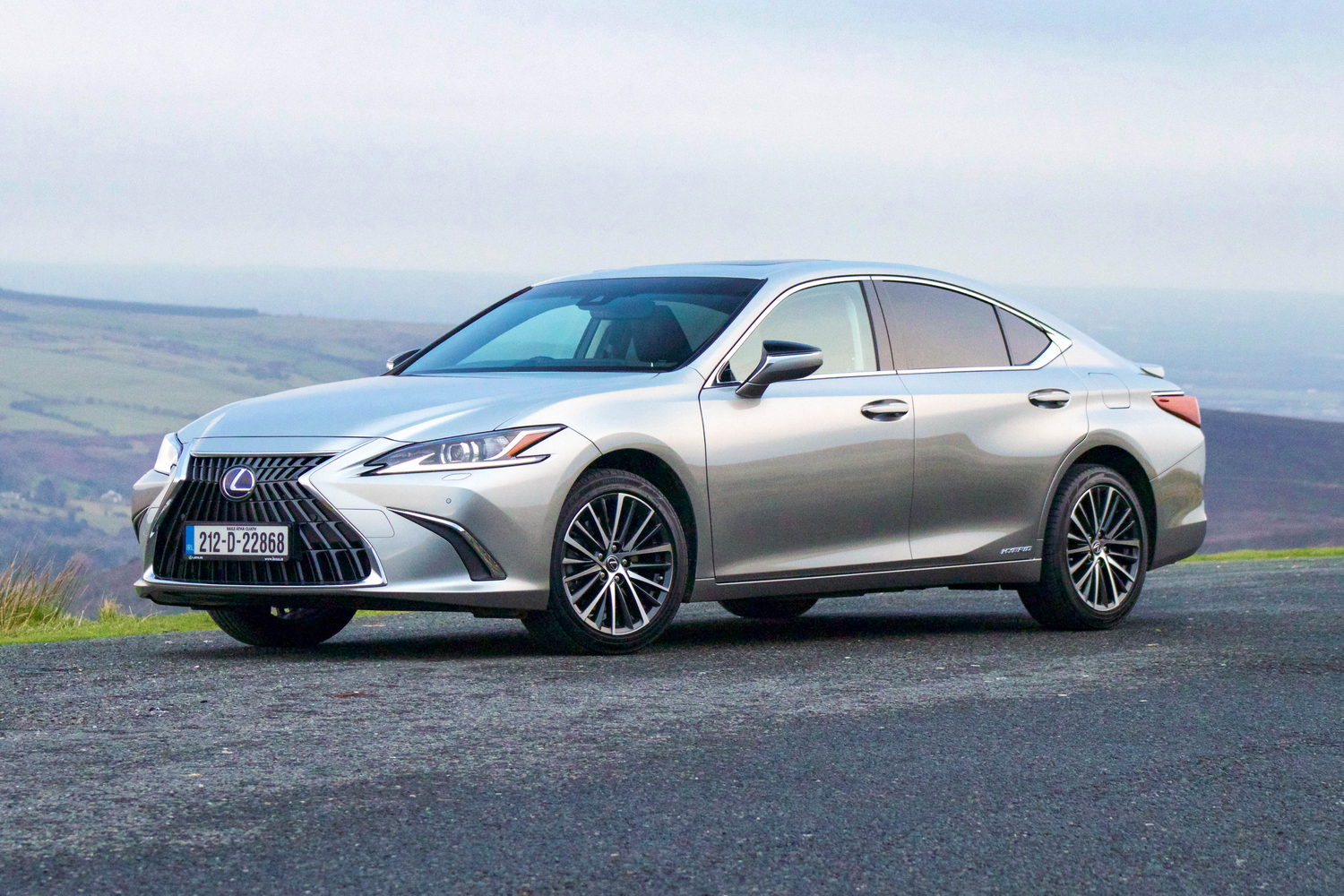Although the new DS 9 hasn't yet arrived on Irish soil, the French brand has already launched a new high-performance version of its luxury model. Designed to rival the Volvo S90 T8 as a tasty alternative to the German establishment, the new model is a flagship for the young premium brand, and another step forward in its drive towards electric power. We tried a top-of-the-range Rivoli+ version to find out whether sports car performance suits the plush premium saloon.
In the metal
At first glance, the E-Tense 4x4 360 looks much like any other DS 9. Yes, there are E-Tense badges on the bonnet, but that will soon be true across the DS 9 range as petrol power is phased out. To the untrained eye, then, it looks just like every other well-equipped DS 9, by which we mean it looks great. Styling is subjective, of course, but all versions of the DS 9 look every inch the premium saloon car.
But while it may not have changed much, that doesn't mean the transition to high-performance hybrid has not left some traces. DS Performance, the organisation behind the firm's Formula E race team, has put the finishing touches to this car, lowering the front suspension by 15mm and dropping the rear by 5mm. Similarly, the track has been widened by 24mm at the back and 12mm at the front, while there are some new-look grilles and 20-inch alloy wheels to mark out this range-topping model.
Inside, there are more changes, but they're still hard to spot. DS has done nothing to the interior trim, so there's no clever steering wheel or carbon-fibre. Even DS admits this is more of a grand tourer than an out-and-out sports saloon, so this Rivoli+ model comes with a luxurious leather-bound cabin. Performance line versions feel a little sportier, as you'd expect, but it's still a soft and tactile environment - there's nothing remotely stripped-back about it.
But that's not to say the cabin doesn't have its idiosyncrasies. The window switches are on the centre console, and dashboard buttons have been almost entirely eschewed in favour of an all-encompassing touchscreen nerve centre. It's more or less the same system you get in a Peugeot, and it's occasionally sluggish and fiddly.
The digital instrument cluster, on the other hand, is much more of a success, with a choice of clear displays and configurations. It isn't as clever as the Virtual Cockpit you get in an Audi A6, but it's easier to read than BMW's alternative, and the minimalist diamond-pattern displays are refreshing.
And that isn't the only tech win. We're childishly delighted by the BRM clock that flips up from the dashboard when you start the engine, and the optional Night Vision infra-red camera is a useful gimmick, extending your field of view on dark country roads.
The DS 9 is relatively practical, too, with rear passenger space that's more or less in line with other models in this class. Seating four adults shouldn't be a problem, while space for kids is plentiful. As is the luggage space on offer. The 510-litre boot is bigger than you'll find in rival plug-in hybrids, albeit slightly less capacious than conventionally powered executive saloons.
Driving it
This is the high-performance version of the DS 9, so the plug-in hybrid powertrain feels like a sensible place to start. Combining a 200hp 1.6-litre petrol engine, a 110hp electric motor at the front and a 113hp motor at the back, it produces a maximum of 360hp at any one time. Working with all-wheel drive and an eight-speed automatic transmission, that's enough for a top speed of 250km/h and a 0-100km/h time of 4.9 seconds.
But while performance is the name of the game for this version of the E-Tense, it also has one eye on economy. The 11.9kWh battery pack predominantly feeds the rear motor, which is more efficient than its front-mounted counterpart, allowing an official zero-emission range of 47km before the petrol engine is required. The two front-mounted motors, both petrol and electric, will step in only if conditions or the driver demand it. Like all plug-in hybrids, the E-Tense 360 will only prove economical if you charge up the battery from an external source regularly, but those who mostly cover short distances and can charge at home may find themselves achieving something close to the 1.8 litres/100km official fuel consumption.
Drivers are helped in that mission by the driving modes and the touchscreen interface, both of which give the driver a chance to tailor the car and the powertrain to suit the conditions. Electric mode is the default, and it makes full use of the battery before handing over to the petrol engine, while Hybrid mode picks what it thinks is the right power source for the situation. Unique to the 360 is the 4WD mode, which uses all three motors to provide permanent all-wheel drive. And because the petrol engine is running, the car can generate enough electricity to keep the rear motor turning even when the battery is flat. That means you'll still have all-wheel-drive traction no matter what.
The E-Tense 4x4 360 comes with a regenerative braking coach that teaches you how to make best use of the Formula E-inspired two-tier braking system. In essence, a light touch on the brake pedal will cause the car to brake using its electrical system, harvesting energy to recharge the battery. A heavier press on the pedal will wake the E-Tense 4x4 360's uprated hydraulic brakes from their slumber, slowing the car more quickly. The trick for maximum efficiency is to use every drop of electrical 'engine' braking to slow down, without needing to press the pedal harder and use the hydraulic brakes, which turn kinetic energy into heat, rather than electricity.
With the E-Tense 4x4 360's coach, a display will tell you when the electrical braking is in action with a green bar, but that will go orange when the hydraulic brakes are activated. The car then awards you a score that tells you when you're getting the hang of when to slow down and how hard to brake for maximum efficiency. Get it right, and DS says 50 presses of the brake pedal could top the battery up by an extra 10%, making it a worthwhile exercise.
The touchscreen also controls the DS 9's ride and handling, albeit to a lesser extent. Opt for Comfort mode and the powertrain is left untouched, but the suspension is softened for maximum comfort. The car has Active Scan technology, allowing it to scan the road ahead and tune the suspension accordingly, and that makes a bigger difference than you might expect, but the car is fairly comfortable anyway.
We won't pass full judgement until we've evaluated it on Irish roads, but our French test route suggested the DS 9 will be brilliant on the motorway, if lacking a little body control on more rutted roads. But for a heavy plug-in hybrid on 20-inch wheels, first impressions weren't bad at all.
Perhaps more surprising was the handling. The lowlier, front-wheel-drive E-Tense 250 is already surprisingly agile for something so big and comfort-focused, but the E-Tense 4x4 360 has a little more bite to it. It still doesn't feel as poised as a 5 Series or as balanced as a Jaguar XF, but it doesn't lean as much as you might imagine, and it turns into corners eagerly. It isn't class-leading, but it's stable and secure, which gives you the confidence to enjoy it on a decent mountain road.
For all that, though, the DS 9 is still more of a tourer than a sports car, with the comfort and stability far better suited to cross-continent motorway journeys than short Sunday blasts. Compared with more motorsport-inspired German rivals, that's quite a refreshing approach.
What you get for your money
This flagship version of the DS 9 is available in a choice of two trim levels, with the Performance Line marking the entry-level option. That comes with sporty Alcantara upholstery and some Performance Line badging, as well as all the toys you'd really need, including a reversing camera, navigation and heated front seats. Move up to the Rivoli+, and you get ventilated front seats, heated rear seats and a 360-degree manoeuvring camera, plus a few other choice goodies.
DS Automobiles has not yet confirmed pricing for the Irish market, but the E-Tense 4x4 360 is expected to be the most expensive model in the range.
Summary
The DS 9 is a niche product, and this go-faster version is a niche within a niche. Although the addition of all-wheel drive might be useful for some customers, the less powerful E-Tense 250 model still has plenty of performance in reserve, and it's likely to be noticeably cheaper. But the 360 is a worthy halo for the DS 9 range, and a showcase of what DS can do when it puts its mind to it.

